






















































Volume 74 Number 02 • March–April 2020
The Publication of the California Veterinary Medical Association
Publisher Valerie Fenstermaker
Managing Editor Kristen Calderon
Editor Trisha Consunji
Receive detailed information on emergency/critical care topics that can be used in your everyday practice as well as during a disaster response and earn 7.5 CEUs. For more information, visit cavmrc.net.
More than 245 CEUs are available for veterinarians, veterinary technicians, veterinary assistants, and practice managers presented by world-class speakers in 15 tracks. For more information, see page 24.
California Licensing Curriculum Course, September 13–16, 2020
The California Licensing Curriculum (CLC) is a 3.5-day course designed to meet the requirements of the California Curriculum for qualified veterinarians to obtain a permanent veterinary license in California without taking the state board examination. Registrants can earn a maximum of 29.5 CEUs. Registration opens March 23, 2020.
CVMA Fall Seminar in Palm Springs, October 9–11, 2020
Education and relaxation are yours at this year’s CVMA Fall Seminar in spectacular Palm Springs. Registration opens May 4 See page 32 for more information.
Earn CE with the CVMA Online Seminars
Below are our upcoming online seminar topics. Please refer to page 32 for dates and details.
• Introduction to Cannabinoid Medicine: What Veterinarians Need to Know
• Judicious Use of Medically Important Antimicrobial Drugs
• Look Like a Wizard: Lifting the Spell on Orthopedic Evaluations and Canine Movement (This seminar is geared to technicians.)
Registration for all CVMA events can be made online by logging onto cvma.net or by calling 800.655.2862.
For the timeliest CE information, visit Learning at cvma.net.
California Veterinarian (ISSN 00081612) is published bi-monthly by the California Veterinary Medical Association, e-mail: staff@cvma.net. California Veterinarian is an official publication of the California Veterinary Medical Association. Annual subscription rates to non-members: $50 U.S., $60 Canada/Mexico, $70 overseas. Price per single copy: $10 current year, $12 back issues. Periodicals postage paid at Sacramento, CA and at additional mailing offices.
POSTMASTER: Send address changes to California Veterinarian, 1400 River Park Dr., Suite 100, Sacramento, CA 95815-4505. Phone: 800.655.2862
The CVMA and California Veterinarian assume no responsibility for material contained in articles and advertisements published, nor does publication necessarily constitute endorsement by them. ©2020 CVMA
Publication Designer Howard Steffens
Classified Advertising Laura Phillips
Board of Governors
President Dr. Bryan Halteman
President Elect Dr. Dirk Yelinek
Member-at-Large Dr. Elisabeth Klapstein
Members Dr. Patrick Connolly
Dr. Larry Correia
Dr. Jennifer Hawkins
Dr. Michael Karle
Dr. Nada Khalaf
Dr. Adam Lauppe
Dr. Julia Lewis
Dr. Bruce Lindsey
Dr. Keith Rode
Dr. Marshall Scott
Dr. Dianne Sequoia
Dr. Peter Vogel
Student Representatives
University of California, Davis Ms. Brennah Montague
Western University Ms. Darleen Tu
Treasurer Dr. George Bishop
Chair, House of Delegates Dr. Peter Bowie
CVMA Staff
Executive Director Valerie Fenstermaker
Assistant Executive Director Della Yee
Director of Communications Kristen Calderon
Director of Finance Kathy Van Booven
Director of Regulatory Affairs Dr. Grant Miller
Design and Marketing Manager Howard Steffens
Membership and Student Services Laura Phillips
Manager
Publications Manager Trisha Consunji
Accountant Bernice Evans
Executive Assistant Georgia Ashley
Communications Coordinator Nicole Heath
Finance Coordinator Sharmele Browne
Legislative Coordinator Seanna Griffis
Meetings and Events Coordinator Lily Briggs
Membership and CE Coordinator Jennifer Smith
Receptionist Mary Young
Display Advertising
Please contact Trisha Consunji at 916.649.0599 or tconsunji@cvma.net.
Tell us what you think!
Want to comment on what the CVMA is doing or writing about? Send an email to comments@cvma.net or call 800.655.2862. Your thoughts and opinions matter to us. The CVMA is YOUR association! The CVMA is 8,200 voices strong. Let us hear your voice!
Have you seen this bill? What does the CVMA think about this bill? Can a CVMA representative attend a meeting at the Governor’s office on this bill? Can the CVMA get a small group of veterinarians to meet with the Senate or Assembly consultants on this bill? Who is sponsoring this bill? What is the CVMA’s position on this bill?
This is how the legislative season starts in early December at the CVMA. As issues turn into legislative bills in January and February, CVMA lobbyists and legislative staff get requests for information, our participation, the CVMA’s position, and more. These requests come from legislative consultants, other lobbyists, veterinary associations throughout the country, interested parties, and others. It is a nonstop whirlwind of intense legislative activity through September 30, the last day for the Governor to sign bills.
We drill down from over 2,400 bills that are introduced, to all of the key bills that have a direct impact on CVMA members, clients, patients, and the veterinary profession as a whole. Our legislative binders start with the original bill and grow to include fact sheets, multiple layers of amended versions, and applicable government section codes. If you have never had the opportunity to read a legislative bill, I encourage you to do so and I guarantee you will wonder what it actually means. It takes years of experience to understand the history, implications, the Business and Professions code that governs licensed professions, and the eff ects even the smallest wording can have on your ability to practice. It also takes constant monitoring as bills can morph into completely diff erent legislation that can quickly aff ect your ability to treat your patients.
Relationships are a key part of the CVMA’s legislative success. Our outreach not only extends to the CVMA leadership and members but also to the veterinary schools, the Veterinary Medical Board, the California Department of Food and Agriculture, the California Department of Public Health, the AVMA, state and local veterinary associations, and other relevant stakeholders. We do not operate in a bubble—we seek out opinions from all practice types and have a key meeting in March with our Legislative Committee to discuss all bills. Their recommendations go to the Board of Governors who determine the CVMA positions.
Who would do this important work for the California veterinary profession if the CVMA wasn’t here? I am often stumped by non-members who say the CVMA doesn’t do anything for them. This is just a part of what we do but it is the most critical role that we take on. The entire veterinary profession in California needs to work together to achieve the best legislative outcomes for you and your patients.

This year will again be challenging. Bill topics include animal blood banks, cannabis, horse racing, veterinary corporations, disaster preparedness, reciprocity, shelter requirements, and more. We welcome your comments, opinions, and questions as we move through the 2020 legislative process.
Valerie Fenstermaker
After six short months, I am halfway through my first year in practice. These months have been filled with meeting new people, learning new things, and helping sick and healthy pets. I am becoming more familiar with my hospital’s practices. It is invigorating to see parallel cases and learn from my previous experience to decide my course of action, whether it is to repeat what I did or choose an alternative. Even though I gain more experience with each new case arriving, I find myself feeling doubt and anxiety.
I believe self-doubt will lessen as I continue to gain experience, hopefully. Put another way, uncertainty and wisdom are inversely proportional. In the absence of wisdom and experience, uncertainty reigns. So the more time that passes in my career, the better I will be able to overcome my self-doubt. I also understand that I will continuously learn throughout my career since medicine is ever-evolving. Thus, even though I will become more familiar with certain aspects of veterinary medicine, there will always be new things that are uncomfortable. I am glad one of the founding principles from my alma mater stuck with me—lifelong learning.
Doubt can be minimized by self-preparation. For every new day and case, I prepare by studying and pouring over my resources so that I am ready to meet the task. Every evening before a procedure, I look into anesthesia protocols and best surgical approaches. Yet during my preparation, I am still anxious that I will fail my patient.
I know that I have only just started my career, but when does the anxiety subside? When am I supposed to feel comfortable going into my procedures and new cases? I think this anxiety is not only felt by new graduates, but by all veterinarians. For new graduates though, anxiety may contribute to imposter syndrome, the feeling of inadequacy even with proper preparation. The crippling question, “Will I ever be good enough?” affects new graduates and can sometimes stifle growth.
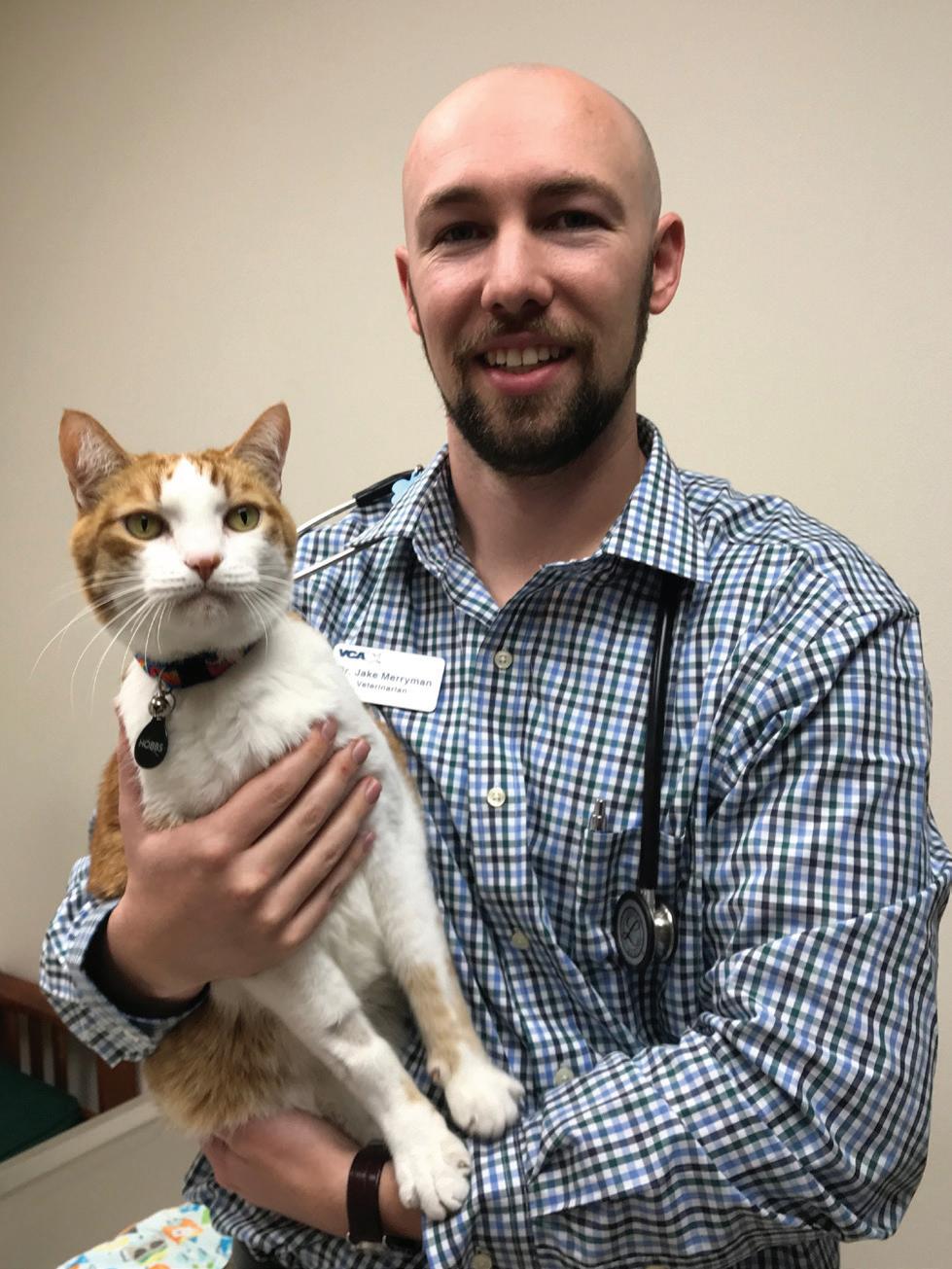
Conversations with mentors and the experience I have gained so far have taught me that anxiety isn’t inherently bad. I believe uncertainty and anxiety are felt by everyone. Uncertainty can drive people to better themselves when confronting difficult situations. Yet it has equal potential to paralyze people if they allow it. For me, I still struggle to use that uncertainty as my driving force to improve as a veterinarian. Although I do not let it stop me, the anxiety I feel before my shift can be daunting.
Veterinarians experience doubt and anxiety because we care deeply about our patients and want to provide the best care. Our perspective on these feelings is what matters. We must be patient since anxiety and uncertainty are inevitable. We have to accept the uncertainty as a driving force, not a source of inadequacy. We should allow ourselves to feel anxious yet not succumb to it. Most importantly, if any of us feel overwhelmed by anxiety, we need to talk to someone. Every veterinarian can sympathize and no one is alone. Sometimes all it takes is to ask for help.
New Voter Voice Platform Makes Searching for Legislation Easier
The CVMA’s Legislative Action Center has a new look and format. The Voter Voice platform makes searching for relevant legislation easier and more user-friendly for our members. Check out the improved format by logging onto cvma.net and clicking on the Government tab.
California Learning Curriculum (CLC) Registration Opens March 23
The CLC is a three and one-half day course designed to meet the requirements of the California Curriculum for qualified veterinarians to obtain a permanent veterinary license in California without taking the state board examination, or for veterinarians who wish to obtain statutorily approved continuing education credit. Visit cvma.net and click on the Learning tab for more information.
Calling All Students! The CVMF/VISC and Ron Faoro, DVM Student Scholarship Award Application Deadline is April 10
Applications for the CVMF/VISC and Ron Faoro, DVM Student Scholarship Awards are due by April 10. For more information or to download an application form, visit cvmf.net. Completed applications should be emailed to staff@cvmf.net. Recipients will be notified by June 30, 2020.
SAVE THE DATE! CVMA Fall Seminar Registration Opens May 4
The CVMA Fall Seminar takes place in Palm Springs from October 9 to 11. This popular seminar sells out quickly so be sure to sign up soon. For more information, see page 32.
2020 Donald G. Low/CVMA Practitioner Fellowship Deadline is May 11
The Donald G. Low/CVMA Practitioner Fellowship is a joint activity between the CVMA and the UC Davis School of Veterinary Medicine. It is intended to provide intellectual stimulation, interaction, and discussion between the practitioner, faculty, and students within an area of interest to the practitioner. Details may be found at ce.vetmed.ucdavis.edu/fellows/fellowship.

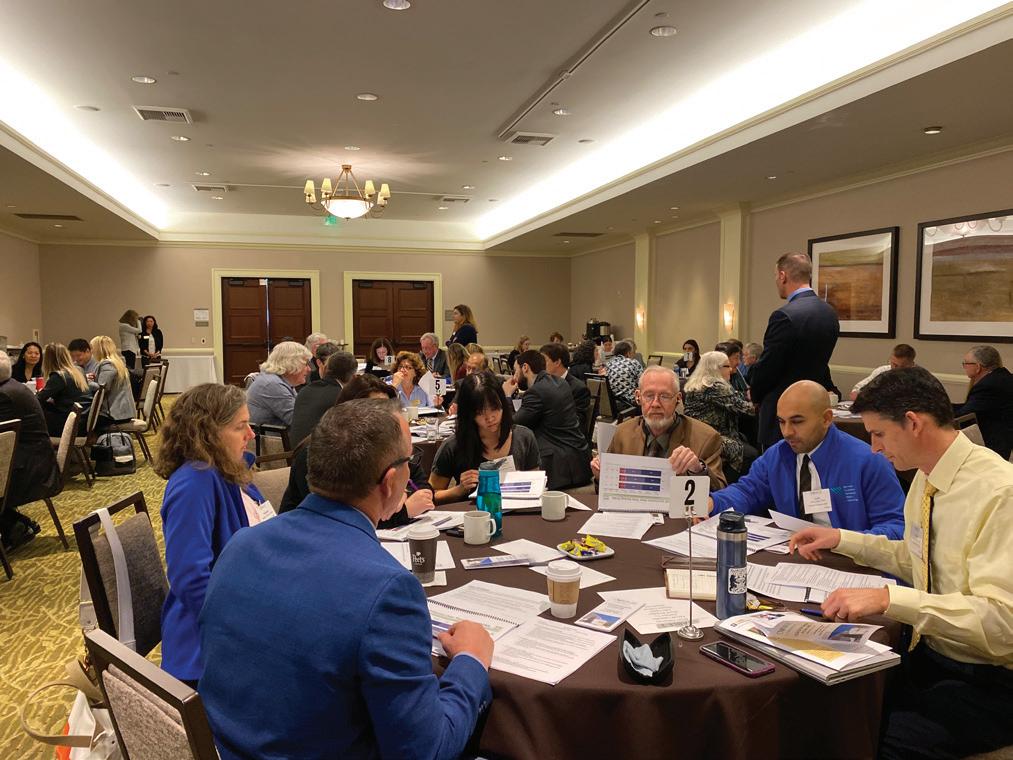

The CVMA Board of Governors, House of Delegates, committee chairs, and constituent association officers convened in Costa Mesa on January 25, 2020 for the annual CVMA Leadership Forum. The topics of discussion included the findings of the 2019 CVMA Economic Issues Survey, legislation and advocacy, and reports from the veterinary schools and CVMA leadership.
The CVMA conducted its third Economic Issues Survey in July and August of 2019 among California veterinarians (DVMs) and registered veterinary technicians (RVTs) to study and report on economic trends affecting California veterinary professionals. The CVMA first partnered with EMC Research to conduct a survey of California veterinarians in 2013 and conducted a second follow-up survey of DVMs and RVTs in 2016.
CEO and President Ruth Bernstein and analyst Susie Meyer of EMC Research presented the key findings of the 2019 CVMA Economic Issues Report. They summarized data about job satisfaction, profitability, hiring trends, salaries, student loan debt, corporate practice ownership, and industry outlook and concerns. The 2019 survey results were compared to the previous surveys to analyze possible trends.
Attendees broke into smaller groups to discuss the survey results and shared their thoughts and opinions then relayed their conclusions with the rest of the attendees. Findings of interest included a steady modest increase in DVM salaries for both owners and non-owners although RVT salaries remain consistent with those reported in 2016; trends in profitability and hiring are strong, however, perceptions about the future of the profession are mixed; and mental health was rated as the top industry concern. The full survey is available to CVMA members at cvma.net.

CVMA Executive Director Valerie Fenstermaker reviewed the CVMA’s 2019 legislative successes and gave a preview of the 2020 legislative season, including returning issues such as medicinal cannabis and cannabis products and their use in veterinary medicine and sources for animal blood donation. Ms. Fenstermaker also encouraged attendees to attend the upcoming CVMA Legislative Day on April 21, 2020 where they will have the opportunity to bring veterinary issues in front of legislators.


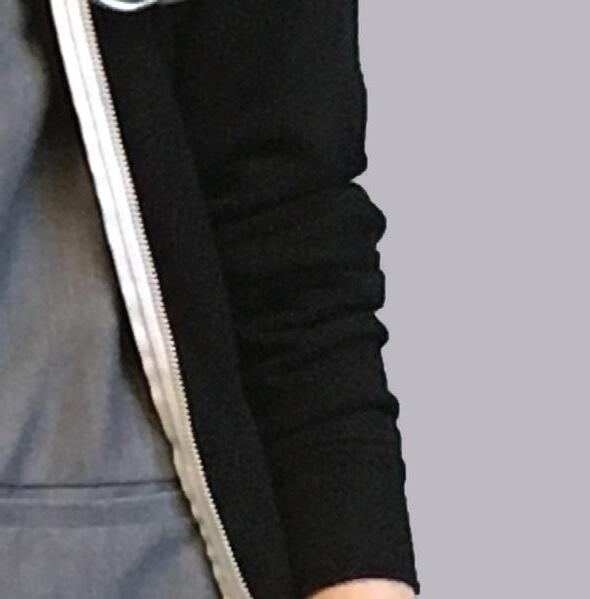
 Shari O’Neill, DVM, MPH, DACVPM
Shari O’Neill, DVM, MPH, DACVPM



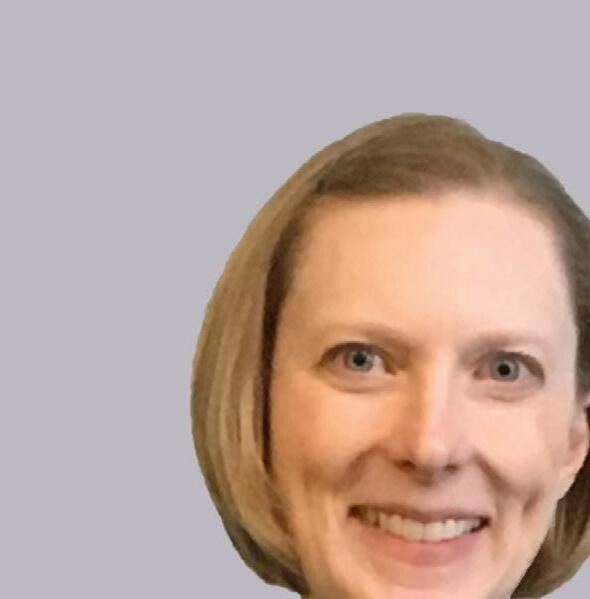
• Chief shelter veterinarian at San Francisco Animal Care and Control

• Practice type: Shelter medicine
• Auburn University
Which fi ve adjectives best describe you?
Practical, conscientious, curious, a able, and funny.
How do you make your workplace fun?
I will never again doubt my ability to take on challenges in my professional career. Veterinarians are uniquely positioned to work in a variety of fields and disciplines. If you’ve been considering exploring a di erent type of practice, go for it!
Shelter work can be stressful and emotionally di cult. I try to find humor in everyday situations and focus on the positive outcomes we achieve.
Members are the heart of the CVMA
Family? Pets?
Husband Brendon, daughter Quinn, and Peggy the border terrier.
Do you have advice to new veterinary professionals?
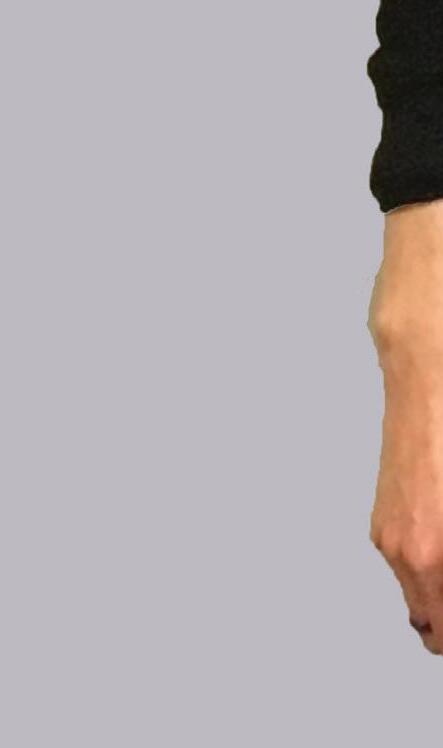


Don’t let di cult people, thoughts, and problems live in your head rent-free! Take care of yourself, cultivate your support system relationships with friends and family, and do things that bring you joy and fulfillment.
What is your pet peeve?
Food safety. I always check expiration dates and date leftovers. No date = time for composting!
What is your favorite guilty pleasure?
Chocolate and sweets.
California legislators submitted over 2,400 bills by the February 21, 2020 submission deadline. CVMA’s lobbyists Mike Dillon and Christina DiCaro reviewed every bill to determine which should move forward to the CVMA legislative team. The legislative team discussed over 40 bills to assess their impact on veterinary medicine, animal health and welfare, and employment law. The CVMA Legislative Committee will meet on March 19, discuss each bill, and recommend positions to the CVMA Board of Governors. The Board will vote on official CVMA positions at their April meeting.
The legislative team, which includes CVMA lobbyists, key staff, the Executive Committee, and Legislative Committee Chair Dr. Dayna Wiedenkeller, closely monitors all bills and represents the CVMA in meetings with legislative staff and bill sponsors.
The following bills are of immediate importance:
This bill, for purposes of reciprocity, would effectively remove the California state licensing examination administered by the Veterinary Medical Board to outof-state veterinarians applying for licenses to practice in California, provided that they meet specified requirements.

The CVMA has been actively involved in the issue of animal blood banking since last year when both Assemblyman Bloom and Senator Wilk introduced legislation to address community and closed-colony canine blood banking in California. Ultimately, Senator Wilk’s legislation, which would have allowed community
blood banks to open in California and maintain the two closed-colony blood banks, was vetoed by Governor Newsom. The Governor’s veto message said, “I am supportive of changing California’s law governing animal blood donation. However, this bill does not go far enough. I ask that the Legislature send me legislation that effectively leads to the phasing-out of ‘closed colonies,’ where dogs are kept in cages for months and years to harvest their blood for sale. The legislation should provide for the safe and humane treatment of donor animals, the welfare of the recipients and adequate oversight and enforcement of this program.” In response to the veto message, both authors have introduced legislation this year which will phase out the two closed-colony blood banks and replace them with establishments that collect blood from community-
sourced animals. The CVMA is engaging stakeholders on this issue to represent the needs of the veterinary profession in preserving a safe and adequate supply of blood and blood products.
The Assembly Business and Professions Committee and the Senate Business, Professions and Economic Development Committee periodically hold joint sunset oversight hearings to review boards under the Department of Consumer Affairs (DCA). The sunset review process provides an opportunity for the DCA, the Legislature, the boards, and interested parties and stakeholders to discuss the performance of the boards, and make recommendations for improvements. The California Veterinary Medical Board (VMB) is being reviewed in 2020. Their report is posted on the VMB website. The CVMA submitted a letter to the Sunset Review Committee with comments on issues addressed by the VMB in their sunset review report. The CVMA will be representing the profession throughout the sunset review process.
Current law permits veterinarians to discuss the use of medicinal cannabis for animal patients with clients, but prohibits cannabis recommendation. This two-year bill (carried over by the author from last year) would permit veterinarians to recommend medicinal cannabis and cannabis products for an animal patient “for any
condition for which cannabis or cannabis products provide relief.” The CVMA worked extensively with the author last year to amend this bill to address the needs of the veterinary profession and animals. We will again engage the author this year as the bill continues through the legislative process.
This bill exempts from the practice of veterinary medicine the following activities being performed in private and public animal shelters: administering vaccines, administering non-prescription medications including parasiticides, administering medications dispensed or prescribed by a veterinarian, performing first aid, and changing bandages. The bill will also exempt animal shelters that perform only these tasks from obtaining a premises permit from the VMB, which subsequently removes the requirement for a veterinarian licensee manager. This bill suggests critical changes to the practice of veterinary medicine and will be closely followed by the CVMA.
For specific information on bills or to track CVMAmonitored bills through the legislative process, visit the CVMA online Legislative Action Center, which now has a new look and format. The Voter Voice platform makes searching for relevant legislation easier and is now more user-friendly. Check out the improved format by logging onto cvma.net and clicking on the Government tab.
January 6 – Legislature reconvenes.
January 10 – Deadline for Governor to submit budget.
February 21 – Last day for bills to be introduced.

May 29 – Last day for bills to pass out of house of origin.
June 15 – Budget bill must be passed by midnight.
June 26 – Last day for policy committees to hear and report fiscal bills.
July 2 – Last day for policy committees to meet and report bills.
August 14 – Last day for fiscal committees to meet and report bills.
August 21 – Last day to amend bills on floor.
August 31 – Last day for each house to pass bills.
September 30 – Last day for Governor to sign or veto legislation.
For a complete list of bills on the CVMA’s legislative list, visit cvma.net, click on the Government tab > Legislative Action Center.
With a new year and decade upon us, it is an opportune time to update or establish your documented business inventory reports. Reasons for you to keep an inventory of your acquired business personal property for your veterinary practice include assisting with your practice’s valuation, tracking of product usage, accounting or taxes, and insurance replacement cost valuation. It may also be used as evidence of collateral when applying for business loans.
The recent catastrophic fires in California devastated numerous businesses throughout the state. With the threat of continued natural disasters as well as individual risks, a complete and documented business inventory list is important as it may be requested by your insurance carrier should you file a claim.
Have you ever considered how difficult the task would be to recall, let alone document, all of the lost business property acquired over the course of your professional life in the event of a catastrophic event? This task could be daunting, especially considering the time and effort it would take post-loss to recreate or duplicate this documentation.
A commonly suggested starting point to document your business inventory is to record a video. This can easily be done with a smartphone. Record each room, including the contents of every drawer and cabinet. Identify every item with a cost and designate a new or replacement value. Then replay your video, documenting and calculating your business property values for each
room. Complete this task for your entire practice. You may be surprised by your practice’s overall calculated replacement values. Videos are also a great way of recalling items previously forgotten in the event of an insurance claim.
While recording a video is a valuable starting point, a written inventory record is crucial. Your written business personal property inventory list, at a minimum, should include the following information:
• Description of the equipment or item(s)
• Model name and/or serial #
• Purchase price or lease value
• Date acquired
Your documented business inventory should be duplicated and kept in a separate location from your business for safekeeping. It should also be a “living” document and updated as you acquire or eliminate business equipment or related inventory items.

The bottom line is that inventory control and a documented record could be vital to the survival of your business. If you do not have a good handle on your practice’s inventory excesses or shortages, you will not have a true accounting or snapshot of how your business is doing. It is a competitive market out there and it is better to be informed, updated, and in control of your business assets.
For more information or questions, contact your VISC representative at 888.762.3143.
The California Veterinary Medical Board (VMB) and its Multidisciplinary Advisory Committee (MDC) met on January 29–31, 2020 in Sacramento. CVMA Executive Director Valerie Fenstermaker, Director of Regulatory Affairs Dr. Grant Miller, and CVMA VMB liaison Dr. Ken Pawlowski attended the meetings to represent members and the profession on issues discussed on the meeting agendas. The following is a summary of items discussed during the meetings.
The MDC discussed the potential for non-veterinarian corporate practice owners to influence how veterinarians practice medicine. The MDC listened to representatives from veterinary corporations as well as veterinarians employed by corporate-owned practices. The committee voted to send a set of statutory proposals regarding corporate ownership of veterinary practices to the VMB for review.
The VMB discussed the recent fee increase and upcoming legislation. They approved several regulatory packages with minor changes. Below is a list of the packages with a description of the proposed substantive changes.
• Compounding in Veterinary Practice: The VMB added a direct veterinary supervision stipulation to RVTs who are compounding from bulk substances.
• Veterinarian-Client-Patient Relationship (VCPR) Informed Consent: The VMB changed the definition of the VCPR to require a veterinarian to communicate a “medical, treatment, diagnostic, and/or therapeutic plan” to a client, rather than a “course of treatment” as currently written.
• Substantial Relationship and Rehabilitation Criteria: These regulatory changes were drafted to bring the VMB into compliance with California statute regarding the criteria that the VMB must use when considering granting a license to an out-of-state applicant with record blemishes.
• Civil Penalties for Citation: Changes the Board Executive Officer’s authority to consider violations of the Veterinary Medicine Practice Act not specifically related to actual medical practice.

The VMB approved a proposed statutory change regarding the steps that the VMB Executive Officer may take when issuing a citation and the procedures by which a respondent may contest it. The changes are being proposed to remove duplication between two sections of the law and to help to streamline the citation process.
The VMB responded to feedback about their recently published “Guidelines for Veterinarian Discussion of Cannabis Within the Veterinarian-Client-Patient Relationship.” As a result of public comment, sections relating to industrial hemp were edited with minor changes.
This benefit entitles CVMA member veterinarians up to one-half hour of telephone and research work per month with an attorney from Wilke Fleury LLP.
Services Offered:
• Business tax issues
• Business owner succession planning
• Cal/OSHA issues


• Contract issues
• Employment law



• Licensure issues
• Practice ownership and organizational structure
• Regulatory and administrative law





• Veterinary Medical Board enforcement issues
Services Not Included:
• Criminal law
• Domestic relations
1 Call Wilke Fleury at 916.441.2430
2. Provide your CVMA member ID number
3. Ask for Dan Baxter for issues pertaining to:
• Veterinary Medical Board

• Administrative/regulatory issues
Ask for Steve Marmaduke for issues pertaining to:

• Employment
• Contract
• Lease
• Practice succession or related issues
This program generously sponsored by






 by Dan Baxter, Esq. By
by Dan Baxter, Esq. By
If you have been closely following the legal landscape attending to the use and discussion of cannabis in a veterinary application, you are familiar with the fact that 2019 provided little clarity on what veterinarians can and cannot do. As practitioners muddled through 2019 with almost no direction as to what was permissible, the hope was that the Veterinary Medical Board’s (VMB) end-of-year guidelines would clarify matters, and take us into 2020 with a clear, or at least clearer, road map regarding veterinary rights and obligations. While the VMB produced those guidelines in advance of their required publication date and provided content that draws important distinctions between cannabis and industrial hemp (discussed below), it also left many questions unanswered.






On January 1, 2019, Assembly Bill 2215 went into effect. That bill, among other things, placed Business and Professions Code section 4884 onto the books. Section 4884 provides as follows:
























(a) A licensee shall not dispense or administer cannabis or cannabis products to an animal patient.









(b) Notwithstanding any other law and absent negligence or incompetence, a veterinarian licensed under this chapter shall not be disciplined by the board or have his or her license denied, revoked, or suspended solely for discussing the use of cannabis on an animal for medicinal purposes.
(c) On or before January 1, 2020, the board shall adopt guidelines for veterinarians to follow when discussing cannabis within the veterinarian-clientpatient relationship. These guidelines shall be posted on the board’s Internet Web site.















Pending the VMB’s adoption of the “guidelines” directed in subdivision (c), veterinarians were generally writing on a blank slate for purposes of determining the permissible parameters of the “discussion” authorized in subdivision (b). For instance, if the statutory authorization to “discuss[] the use of cannabis on an animal for medical purposes” did not include the ability to make recommendations regarding its use (for or against), the discussion authorization was effectively meaningless. All practitioners really knew was that said authorization did not permit a veterinarian to “dispense or administer cannabis or cannabis products,” as that conduct is affirmatively prohibited by subdivision (a).
















Also newsworthy in 2019 was the introduction of Senate Bill 627 (Galgiani). That bill would repeal the provision prohibiting veterinarians from dispensing or administering cannabis or cannabis products to an animal patient, and would authorize veterinarians to discuss the use of and issue a recommendation for the use of, cannabis for conditions in which it would provide relief. The bill would also allow a primary animal caregiver, on a veterinarian’s recommendation, to purchase cannabis products for use on an animal that the caregiver owns. Although the bill was unsuccessful in 2019, it is operating on a two-year time horizon, and will thus be again up for consideration in 2020.

In December, the VMB issued the aforementioned guidelines required under Business and Professions Code section 4884(c): vmb.ca.gov/forms_pubs/cannabis_ discussion.pdf. Those guidelines are closely modeled on those previously issued by the California Medical Board and contain content drawn from existing statutes and regulations, including content relating to the formation of the veterinarian-client-patient relationship (VCPR), recordkeeping requirements, conflicts of interest, and advertising. The recordkeeping-related guidelines stress the importance of providing “advice about potential medical risks of the medical use of cannabis,” and urge clinicians to “remind[] the client that cannabis is not being recommended or prescribed by the veterinarian.” Hence, under the VMB’s guidelines, the bottom line as to cannabis is that as a veterinarian, you can talk about it, but you cannot recommend it, and whatever you talk about, you had better document.

The above synopsizes the current state of play relative to the ability of veterinarians to discuss cannabis with clients. However, what is meant by “cannabis” in this context? California’s definition of cannabis is set forth in Health & Safety Code section 11018, and does not include industrial hemp. Industrial hemp, in turn, is defined in Section 11018.5, and means “a crop that is limited to types of the plant Cannabis sativa L. having no more than 0.3 percent tetrahydrocannabinol (THC) contained in the dried flowering tops, whether growing or not; the seeds of the plant; the resin extracted from any part of the plant; and every compound, manufacture, salt, derivative, mixture, or preparation of the plant, its seeds, or resin produced therefrom.” These provisions, as well as similar federal laws, make clear


that industrial hemp, unlike cannabis, is not a controlled substance, and is thus regulated by the state and federal agricultural departments, as well as the FDA, rather than the DEA.
Why does this matter? The answer is simple: Popular products such as cannabidiol (CBD) oil are generally derived from industrial hemp, as defined above, rather than cannabis. As to industrial hemp, the VMB’s guidelines, after listing the relevant regulating entities, read as follows:
[I]f a veterinarian administers, dispenses, furnishes, recommends, or discusses the use of industrial hemp in an animal patient, the veterinarian would not be subject to the statutory provisions regarding cannabis but would be subject to the provisions of the Veterinary Medicine Practice Act applicable to diagnosing, prescribing, or administering a drug, medicine, appliance, application, or treatment of whatever nature for the prevention, cure, or relief of a wound, fracture, bodily injury, or disease of animals. (Bus. & Prof. Code § 4826 (b),(c).) In addition, a veterinarian who manufactures, markets, or sells drugs not approved by the FDA is in violation of federal law. Industrial hemp is not tested or regulated in the same manner as cannabis, so the veterinarian should use caution when administering, dispensing, furnishing, recommending, or discussing industrial hemp and ensure the product to be used is industrial hemp and not cannabis and should only do so after the industrial hemp product has been approved by the FDA for use in animals.



The VMB’s closing comment reflects the fact that FDA approval is necessary before industrial hemp may be used in a clinical application. In that regard, under the Federal Food, Drug, and Cosmetic Act (FFDCA), any product used to diagnose, cure, mitigate, treat, or prevent disease in animals is a drug that requires FDA approval.
As of this writing, industrial hemp has not yet received such FDA approval; indeed, the FDA has indicated that the sale









































































of any CBD or hemp product in food as a (human) dietary supplement is not legal. Accordingly, it is unclear what the FDA’s final policy in this area will be and how that policy will look relative to a veterinary application. In the meantime, as noted in the CVMA’s recently-issued “Cannabis and Industrial Hemp FAQs” (September 12, 2019, available at cvma.net/wp-content/uploads/2019/09/Cannabis-andIndustrial-Hemp-FAQ_9-13-19.pdf), “veterinarians should exercise caution to understand the legal status of any hemp or CBD products utilized for therapeutic purposes.”



To date, the VMB has not seemed eager to launch aggressive enforcement measures to prohibit veterinary use of cannabis and industrial hemp products. However, the VMB’s guidelines do place veterinarians on notice that the VMB is by no means blessing the use of those products. While it is perhaps unlikely that the VMB would independently come after a practitioner for, as an example, displaying or recommending the use of CBD oil, it is not beyond possibility for a veterinarian to be cited for such conduct in the context of another VMB-related procedure, such as a complaint-driven investigation or even a site inspection. At this point, the VMB’s intentions regarding whether and how to enforce prohibitions on cannabis and industrial hemp are simply not clear. Short of the VMB’s issuance of a more detailed position statement, only time and experience will tell.
While we wait to see what happens with SB 627 in 2020, the current bottom line is that if a veterinarian is going to prescribe, furnish, or recommend any substance for use on an animal, including CBD oil, it should be FDA-approved for such use. Unless and until that occurs, veterinarians who engage in such conduct leave themselves open to VMB citation, including for unprofessional conduct under Business and Professions Code section 4883(g). Veterinarians should also be wary of industry representatives claiming that CBD oil and like products may permissibly be used, sold, displayed, et cetera, in a clinical setting.
 Dan Baxter, Esq.
Dan Baxter, Esq.
Mr. Baxter joined Wilke Fleury LLP in 1999 and has been a partner since 2007. His practice focuses on business litigation and trial work, as well as civil writs and appeals. He also provides general counsel to clients ranging from non-profit organizations and small business to publicly-traded corporations. Mr. Baxter has represented the CVMA in various matters over the years, and has assisted in the CVMA’s efforts to prevent municipal interference with the practice of veterinary medicine. He is part of the CVMA’s Legal Services Program, a program designed to assist CVMA members with workplace safety, legal issues, and laws and regulations that affect the veterinary profession.





The CVMA’s Economic Task Force, which convened to study and report on economic trends affecting California veterinarians (DVMs) and registered veterinary technicians (RVTs), first partnered with EMC Research to conduct a survey of California veterinary professionals in 2013. EMC Research recently conducted a second follow-up survey of DVMs and RVTs. The online survey was conducted in July and August of 2019 and received 2,172 total responses, including 1,488 responses from DVMs (15 percent response rate), and 684 responses from RVTs (16 percent response rate). Responses from DVMs in the 2019 study can be compared to the 2016 and 2013 studies by EMC Research and the CVMA, and responses from RVTs can be compared to the 2016 study.
This final article, the third in a series, explores industry trends and personal satisfaction among DVMs and RVTs in the profession.




Hiring and Job Satisfaction












Hiring has been increasing slightly over the years but remains higher for RVTs. Over three-quarters (77 percent) of RVTs surveyed said their practice has hired an RVT or veterinary assistant in the past year. A little over half (56 percent) of DVMs work at a practice that has hired a DVM in the last year.

The likelihood to hire has remained stable among RVTs since 2016. Half of all DVMs surveyed reported that their practice is likely to hire a veterinarian in the next year, a substantial increase from 41 percent in 2016 and 25 percent in 2013.


























The majority of DVM respondents do not place an emphasis on internship or residency training, though importance of both has been increasing slightly over the years. For internship training, 14 percent of DVMs said it is extremely important for applicants, compared to 12 percent in 2016 and six percent in 2013. Only 10 percent said that it is extremely important for applicants to have residency training, versus nine percent in 2016 and four percent in 2013.
In terms of hiring difficulty, almost a quarter (73 percent) of DVMs report that their practice has had difficulty finding qualified candidates for open positions. Over 8-in-10 RVTs (81 percent) agree with the same statement.
DVM respondents reported being most satisfied with their work environment (80 percent total satisfied), followed by their salary (77 percent). Just under two-thirds (65 percent) of DVMs are satisfied with their work-life balance. RVT respondents are most satisfied with their work environment (71 percent total satisfied) and benefits (65 percent). Approximately half (52 percent) of RVTs are satisfied with their salary.



Your
The opportunities for professional growth offered by your employer
Your benefits
Your work-life balance
Your

The opportunities for professional growth offered by your employer

















Your work-life balance
Your salary
Total educational debt is increasing among DVMs. Of those surveyed, 14 percent reported being over $250,000 in debt after completing veterinary school, up from 10 percent in 2016 and 5 percent in 2013. While the proportion of DVMs with no debt has remained relatively consistent, the amount of DVMs with debt under $30,000 has been decreasing. Only 14 percent reported debt less than $30,000 in 2019, compared to 19 percent in 2016 and 24 percent in 2013. Out of all DVM respondents, 39 percent agree that student loan payments are currently a major burden for them.





What was your total educational debt (including debt from undergraduate school) upon completing veterinary school? 2013




















2016 2019

Student debt among RVTs has slightly increased since 2016. Over a quarter (29 percent) of RVTs had over $20,000 in debt after completing veterinary technician school, versus 24 percent in 2016. RVTs feel less burdened by student loans than DVMs. Twenty-nine percent say that student loan payments are a major burden, compared to 32 percent in 2016.





What was your total educational debt (including debt from undergraduate school) upon completing veterinary technician school?



Student loan payments are a major burden for me. Strongly Agree Somewhat Agree Total Agree













DVMs continue to be split when it comes to optimism about the future of their profession, with 51 percent agreeing that they are optimistic about the future and 46 percent disagreeing with the statement. Over half (55 percent) would not recommend a veterinary career to a friend or family member. Regarding the growth of corporate ownership in the industry, DVMs are largely opposed. Only 18 percent of surveyed DVMs think that the current growth is good for the industry.













I am optimistic about the future of the veterinary profession.
I would recommend a veterinary career to a friend or family member.
The growth of corporate veterinary practices is good for the veterinary industry.
RVTs have similar outlook attitudes to DVMs. A little over half (54 percent) are optimistic about the future of the profession, though only 41 percent say they would recommend a veterinary career to a friend or family member. RVTs are slightly more positive about corporate ownership, with 23 percent agreeing that it is good for the industry.
I am optimistic about the future of the veterinary profession.
I would recommend a veterinary career to a friend or family member.
The growth of corporate veterinary practices is good for the veterinary industry.













All respondents were asked about their confidence in their ability to make a good living in the profession. A large majority of DVMs (71 percent) agree that they will be able to make a good living in the veterinary profession, and 27 percent strongly agree. A smaller proportion of RVTs (more than 29 percent) say they feel confident in their ability to make a good living, with only seven percent strongly agreeing.








I am confident I will be able to make a good living in the veterinary profession.










Satisfaction with the health of the veterinary industry is split evenly among DVMs and RVTs. Just under half (48 percent) of DVMs are satisfied with the health of the industry, while 51 percent of RVTs are satisfied.



 by Tami Shearer, DVM, CCRP, CVPP, CVA, CHPV, CTPEP By
by Tami Shearer, DVM, CCRP, CVPP, CVA, CHPV, CTPEP By
Hospice and palliative care is fast becoming a recognized field in veterinary medicine for companion animals. This evolving discipline is paramount to preserving the quality of life of patients and to helping support the pets’ caregivers. Combining modern medical advancements with creative thinking gives veterinarians more options to treat the clinical signs of disease enabling the profession to preserve a longer and better quality of life for pets struggling with life-limiting challenges. This philosophy of care can be adopted into any type of practice.
Pet owners may seek out and choose to adopt hospice or palliative care for various reasons. These reasons include a decision not to pursue a curative treatment for their pet; diagnosis of a life-limiting illness; or when symptoms of a chronic illness interfere with the routine of the pet. These services can also be utilized when a pet has a disease in which curative treatment has failed or when a pet requires long-term intensive care. Progressive illnesses and traumas with associated health complications also meet this criteria.
Created over a decade ago by this author, practices may benefit by following the five-step Hospice and Palliative Care Plan when introducing these services to their clients. The first step involves the evaluation of the pet owner’s needs, beliefs, and goals for the pet (psychosocial needs). The second step educates the pet owner about disease or aging processes. The third and fourth steps involve the development of a personalized plan and how to apply the techniques of the plan. The fifth step provides emotional support during the entire care process and after the death of the pet.
One of the steps in providing hospice and palliative care involves the development of a personalized plan for the caregiver and pet. The plan should take into consideration the psychosocial beliefs of the family and their desires for the pet as well as the pet’s willingness to accept the said
treatment plan. It is important during the development of a personalized plan to apply other forms of integrative care. Besides integrating hospice and palliative care into a practice, utilizing a broader concept of integrative care serves this group of patients and families well. According to Duke University Medical Center, integrative healthcare is an approach to care that seeks to integrate the best of Western scientific medicine with a broader understanding of the nature of illness, healing, and wellness. The care addresses the whole being, including body, mind, and spirit in the context of community. Integrative care can also be defined as a combining allopathic (science-based modern medicine and surgery) and complementary therapies.
Introducing all concepts of integrative care includes being mindful of the following aspects of comprehensive care: education about the disease process, conventional care options, science-based alternative options, anecdotal alternative options, acupuncture, rehabilitation techniques, chiropractic care, nutritional options, environmental enrichment, lifestyle changes, supplements, nutraceuticals, herbal formulas, regenerative medicine options, and last but not least, self-care.
When creating an integrative plan, it is important to assess how the caregiver is doing with the proposed plan and to ensure that all parts of the plan are tolerated by the patient. Because patients’ conditions in hospice and palliative care often wax and wane, modifications must be made to the care plan, in some cases, on a daily basis.
Integrating hospice and palliative care into a practice helps to ensure that the pet is comfortable up until the time that the pet dies naturally, there is a hospice-assisted death, or until the need for euthanasia is determined with the help of the professional support team and family. The utilization of integrative health care techniques improves the ability of caregivers to provide superior support and treatment.
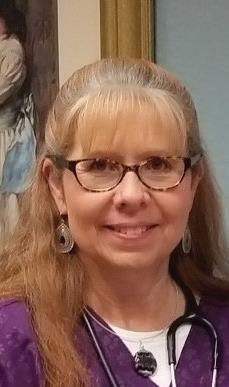

June 18–21, 2020
The 2020 Pacific Veterinary Conference will be held in San Francisco, a city famous for its scenic beauty, world-class shopping and dining, cultural attractions, and iconic landmarks. There is so much to do and see both at the conference and in your spare time.
PacVet offers over 245 CE sessions in 15 tracks for veterinarians, technicians, and staff. Sessions include small animal medicine, small animal surgery, avian/exotics, disaster medicine, equine, practice management, shelter medicine, technician, USDA veterinary accreditation renewal, wellness, hobby and food animal, symposiums, labs, and integrative medicine.

Wednesday, June 17
5:00 PM–6:30 PM Pre-registered attendees packet pick-up
Thursday, June 18
6:30 AM–6:00 PM Registration and information open
7:00 AM–8:00 AM Continental breakfast
Legislative Luncheon
Early Registration Deadline
April 20, 2020
1:30 PM–2:30 PM
3:50 PM–4:10 PM
Friday, June 19
7:00 AM–6:00 PM Registration and information open
7:00 AM–8:00 AM
1:40 PM
2:50 PM–3:30 PM
2:50 PM–3:30 PM
presentations – Vet Expo
– Vet Expo

break – Vet Expo
presentations – Vet Expo
3:15 PM Raffles – Vet Expo
5:15 PM–6:15 PM Vet Expo Mixer 6:00 PM
Saturday, June 20 7:00 AM–6:00 PM
Reception
Expo hours 9:50 AM–10:20 AM Morning break – Vet Expo
10:00 AM–2:00 PM Rabies Titer Testing 12:10 PM–2:00 PM* Lunch – Vet Expo 12:10 PM–2:00 PM Student presentations – Vet Expo
1:40 PM Raffles – Vet Expo
2:50 PM–3:30 PM Afternoon break – Vet Expo
3:15 PM Raffles – Vet Expo
5:30 PM–7:00 PM Alumni receptions: UC Davis and WesternU
5:30 PM–7:00 PM Technician Fair exhibits and reception
Sunday, June 21
7:30 AM–2:30 PM Registration and information open
7:30 AM–8:30 AM Continental breakfast
7:30 AM–12:00 PM Internet café hours
8:30 AM–2:05 PM* CE sessions 11:20 AM–11:50 AM Morning break
*Times vary by track. Schedule subject to change without notice.
Pre-Registered Attendees Registration Packet Pick-Up
Wednesday, June 17, 2020 • 5:00 PM–6:30 PM
Vet Expo Open
Friday, June 19, 2020
Saturday, June 20, 2020
CE Sessions
Thursday, June 18, 2020
Friday, June 19, 2020
Saturday, June 20, 2020
Sunday, June 21, 2020
Follow @PacVet to stay current with conference updates and network with conference attendees!



Use the conference hashtag #PacVet2020 to see all the social chatter!
Facebook.com/pacvet
Twitter.com/pacvet
Instagram.com/pacvet conference

Registered Exhibitors
ACCESS Specialty Animal Hospital
AKC Reunite
AmeriVet
Analgesic Services, Inc.
Animalytix
ANTECH-SOUND
ASPCA Pet Health Insurance
Assisi Animal Health
Aventix
Avid Identification Systems, Inc.
Bank of America Practice Solutions
BCP Vet Pharmacy
Black Diamond Radio
Blue Buffalo Co.
Blue River PetCare
Boehringer Ingelheim
California Veterinary Medical Association
California Veterinary Medical Foundation
California Veterinary Medical Reserve Corps
Capstone Financial Group
CareCredit
CBC Practice Banking
Cell Therapy Tools
Chi Dog, LLC
Christian Veterinary Mission
Companion Animal Health
Covetrus
CP Medical/B Braun
CryoProbe
Cubex
Dan Scott & Associates, Inc.
Dechra Veterinary Products
Diagnostic Imaging Systems, Inc.
Doctor Multimedia
DV Medical Supply
DVM-Transitions.com
Elanco Animal Health
Ellman, a Cynosure Company
Elsevier, Inc.
Esaote North America
ExeGi Pharma
Fortune Practice Management
Golden Gate Veterinary Compounding Pharmacy
Gravity Payments
GVL
Heska
Hill’s Pet Nutrition, Inc.

Hot Dog Patient Warming
IDEXX Laboratories
Infintech
ivetultrasound.com
Jorgensen Laboratories
JustFoodForDogs
Confirmed exhibitors through 03/3/2020
rauhaus freedenfeld & associates, LLP
Rayne Nutrition
Respond Systems
Rose Micro Solutions
Royal Canin USA, Inc.
SAGE Centers
Samsung (AE Medical Systems)
Scratchpay
Scrubin Uniforms, Inc.
Shor-Line Mfg. Co.
Snouts Veterinary
Solutions by Design
Taylors Pharmacy
Karl Storz Veterinary EndoscopyAmerica, Inc.
KindredBio
KVP - KONG Veterinary Products
Lap of Love Veterinary Hospice
LifeLearn Animal Health
Med Care Pharmaceuticals
Medical Illumination
Medical Pet Shirts International
MediVet Products

Merck Animal Health
Midwest Veterinary Supply
Mixlab
Mobile Animal CT
Multi Radiance Medical
MWI Animal Health
Nationwide Pet Insurance
Necropsy Services Group
Nutramax Laboratories Veterinary Sciences, Inc.
Otto Trading Inc.
Pacific Professionals, Inc.
Pawpals Pawprint Regency Family
Pet Health Pharmacy
PetCure Oncology
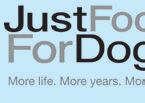
Practivet
Preferred Employers Insurance
Primal Pet Foods
Purina Pro Plan Veterinary Diets
Radiocat
THRIVE Affordable Vet Care
TriLogic Pharma
Trupanion
Tuttnauer USA Co. Ltd.
U.S. Bank
Universal Imaging
Van Beek Natural Science
VDI Laboratory
VenomVet
Vet Books by Success
Vetco Clinics
VetCor
Veterinary Allied Staff Education, Inc.

Veterinary Insurance Services Company (VISC)
VetIQ Staffing
VetMatrix
VetnCare
Vet-Ray Technology
VINx
ViziSites
Walkin’ Pets
Weave
Wedgewood Pharmacy
Wells Construction, Inc.
Wells Fargo Practice Finance
Wiley
Zoetis
Keynote Presentation
• The Role and Medical Management of Military Working Dogs in Combat
James Giles III, DVM, MS, DACVS-SA
Small Animal Medicine
• Internal Medicine
Anthony Carr, Dr. med. vet., DACVIM (SAIM)
• Pharmacology
Jennifer Davis, DVM, Ph.D., DACVIM (LA), DACVCP
• Neurology
Carrie Jurney, DVM, DACVIM (Neurology), CCFP
• Cardiology/Respiratory
Heidi Kellihan, DVM, DACVIM (Cardiology)
• Dermatology
Wayne Rosenkrantz, DVM, DACVD Sponsored by Boehringer Ingelheim
• Ophthalmology
Sara Thomasy, DVM, Ph.D., DACVO
• Nephrology/Urology
Shelly Vaden, DVM, Ph.D., DACVIM
• Gastroenterology
Jacqueline Whittemore, DVM, Ph.D., DACVIM (SAIM)
Sponsored by Nutramax Laboratories
Small Animal Surgery
• Orthopedics
Brian Beale, DVM, DACVS, ACVS Founding Fellow MIS
• Sports Medicine and Rehabilitation
Juliette Hart, DVM, MS, CCRT, CVA, DACVSMR
• Dentistry and Oral Surgery
Mark Smith, VMD, DACVS, DAVDC, Fellow AVDC &ACVS, Oral & Maxillofacial Surgery
• Soft Tissue
David Upchurch, DVM, MS, DACVS-SA
Avian/Exotics
• Reptiles
Thomas Boyer, DVM, DABVP (Reptile and Amphibian Practice
• Avian
Scott Echols, DVM, DABVP (Avian Practice)
• Small Mammals and Backyard Poultry
Susan Orosz, Ph.D. DVM, DABVP (Avian), DECZM (Avian)
Disaster Medicine
• ECC and Disasters
Jamie Peyton, DVM, DACVECC, CVC, CVA, CCRT
Sponsored by CAVMRC
Equine
• Radiology and Ultrasound
Kurt Selberg, MS, DVM, DACVR
• Muscle Pathology/Genetic Diseases
Stephanie Valberg, DVM, Ph.D., DACVIM, DACVSMR
• Emergency/Critical Care
Jarred Williams, DVM, MS, Ph.D., DACVS-LA, DACVECC
Hobby and Food Animal
• Blood Pregnancy Testing and IVF
Robert Cherenson, DVM
• Dairy Herd Health Management Strategies
Alfonso Lago, DVM, Ph.D., DABVP-Dairy
• Small Ruminants
Andrea Mongini, DVM, MS
• Judicious Use of Antimicrobials in Livestock
Marissa Silva, DVM, MVB
• Feeding Management/Managing Hypocalcemia/Postpartum Treatment Decisions
Noelia Silva-del-Rio, DVM, Ph.D.
Integrative Medicine
• Integrative Approaches to Palliative Care
Tami Shearer, DVM, CCRP, CVPP, CVA, CHPV, CTPEP
Practice Management
• Cannabis
Daniel Baxter, Esq. Sponsored by VISC
• Dentistry/Practice Profitability
Mary Berg, BS, RVT, RLATG, VTS (Dentistry) Sponsored by CareCredit
• Independent Contractors
Samson Elsbernd, Esq. Sponsored by VISC
• HR/Finance/Operations
Debbie Hill, CVPM, SPHR, SHRM-SCP, CCFP Sponsored by CareCredit
• Practice Profitability
Linda Markland, RVT Sponsored by CareCredit
• Recordkeeping
Stephen Marmaduke, Esq. Sponsored by VISC
Shelter Medicine
• Spay/Neuter
Robert McCarthy, DVM, MS, DACVS
• Anesthesia and Pain Management
Emily McCobb, DVM, MS, DACVAA
• Interpreting Techniques, Understanding Pathogens
Patricia Pesavento, DVM, Ph.D., DACVP
Technician
• Emergency Critical Care
Megan Brashear, BS, CVT, VTS (ECC)
• Pain Management and Anesthesia
Stephen Cital, RVT, SRA, RLAT, VCC, VTS-LAM
• Nursing Management
Harold Davis, RVT, VTS (ECC) (Anesthesia/Analgesia)
• Behavior
Debbie Martin, LVT, CPDT-KA, KPA CTP, VTS (Behavior)
USDA Veterinary Accreditation Renewal
• Module 10, 19
Katie Flynn, BVMS, MRCVS
• Module 7, 18
Dana Nelson, DVM, MPVM, MS
• Module 22, 23
Adam Smith, DVM
• Module 9
Stacy Wong, DVM
Wellness
Well-Being and Mental Health
Carrie Jurney, DVM, DACVIM (Neurology), CCFP
Sponsored by Boehringer Ingelheim
Sponsored Lab
• Universal Basic/Intermediate Abdominal Ultrasound Lecture Lab
Eric Johnson, DVM, DACVR
• Karl Storz Endoscopy Lab
Todd Tams, DVM, DACVIM; Brian Evans, DVM
Sponsored Symposium
• DVM-Transitions.com Symposium
Transitions & Succession Planning
Joseph Hruban
• JustFoodForDogs Symposium
Whole Food Nutrition
Oscar Chavez, BVetMed
Visit PacVet.net for full course descriptions.
Three ways to register
1. Online: It is quicker and easier to register online and pay by credit card. Visit PacVet.net.
2. Mail: Fill out the registration form on the next page and mail or fax it to us with payment.
3. Call: 800.655.2862 to register over the phone.
Full conference registration
Full conference registration for veterinarians, practice managers, veterinary technicians, and veterinary staff includes:
CE sessions
Vet Expo admission
Continental breakfasts (all four days)
Complimentary lunches and breaks in the Vet Expo (Friday and Saturday)
Refreshment breaks
Evening events
Conference bag
Access to all lecture notes on PacVet.net and the mobile app


Go to PacVet.net for information on:
Staff group registration
Discount practice team registration
Sponsoring a student
Guest badges
Cancellation policy
Exhibit hall only registration
Early-bird registration is good through April 20, 2020. There is a $75 savings based on onsite veterinarian full conference registration.
Sessions by day, track, and speaker
Speaker bios and lecture notes
Complete list of all special events and raffles
Hotel and Vet Expo maps
Plan your “favorites” from sessions and exhibitors

Helpful push notification reminders

One mobile app that hAPPens to have it all. Get the ultimate app experience for PacVet2020.
The Pacific Veterinary Conference will be held at the Hilton San Francisco Union Square in San Francisco, California. It is centrally located off Union Square, the hub for fine dining, the nation’s third largest shopping area, and vibrant nightlife. With public transportation options within a five-minute walk of the hotel, getting around the city is easy, making it the perfect place to stay when visiting the bay.

Hotel Accommodations
Hilton San Francisco Union Square 333 O’Farrell Street
San Francisco, California 94102 (415) 771.1400 Reservations (800) 445.8667
Online Reservations
PacVet.net/San-Francisco/hotel-travel/
Discounted Room Rate
$264 per night plus tax until June 3, 2020.
*Discounted rate available until deadline or until the block fills up, whichever comes first.
Airports
San Francisco International Airport | flysfo.com Oakland International Airport | oaklandairport.com
Transportation
Take advantage of ride-sharing services such as Uber or Lyft, or use BART. The closest BART station is located on Powell Street, two blocks from the hotel. Visit bart.gov for tickets and scheduling.
 by Anthony Carr, Dr. med. vet., DACVIM (SAIM) By
by Anthony Carr, Dr. med. vet., DACVIM (SAIM) By
Constipation is a frequent complaint seen in middle aged to older cats. Left untreated, the disease can become severe enough that either a subtotal colectomy or euthanasia has to be considered. Most clinical cases of recurrent constipation/obstipation are idiopathic in nature, though in some cases, diseases that lead to PU/PD can worsen the issue by leading to chronic dehydration. Megacolon represents the extreme manifestation of obstipation/constipation. In cats with megacolon, abnormal smooth muscle cell function of the colon has been detected, though this was in cats with advanced disease so it is uncertain if this was truly the cause or a manifestation of chronic constipation. With prolonged obstipation, metabolic derangements, inappetence, vomiting, and even endotoxemia and death can occur.
A variety of treatments have been recommended for the constipated/obstipated cat as well as the cat with megacolon. When initially presented, acute management
is indicated. In severe cases, this may lead to the need to perform manual disimpaction, a method generally not enjoyed by patient or doctor. Before manual disimpaction is performed, multiple large volume enemas can be given (5 to 10 ml/kg of warm water). Alternatively, smaller volumes of DSS (5 to 10 ml total dose) can be given, though this is an irritant laxative. This can be supplemented with oral laxatives and fluid therapy to maximize efficacy.
We have developed an alternative to manual disimpaction. Polyethylene glycol 3350 solutions (Colyte, Golytely) can be administered via NE tube to help relieve obstipated/constipated cats. This is similar to methods used in humans. The PEG solution is given as a slow trickle via NE tube (10 hours, roughly 10 ml/ kg/hour). We then alternate this with liquid diets to help provide nutrients to the cat as well also usually helping to soften the feces. It would be possible to give larger amounts by oro-gastric tube but this is generally not well tolerated by cats. This usually results in defecation
within six to 12 hours. Some cases require longer therapy with larger volumes, but we have had almost all cases treated this way to avoid manual disimpaction. Obviously, before embarking on this therapy, it is wise to rule out obstruction of the GI tract that would make passing feces difficult or impossible.


Appropriate and aggressive medical therapy can often delay or make subtotal colectomy unnecessary in cats with recurrent constipation. Diet is an important part of management and it is difficult to be sure which diet is best in each individual case. Increased fiber and low residue diets are the most popular. The only diet with evidence it helps is Royal Canin Fiber Response, though there are other similar brands.
In those cases where diet is not enough, laxatives are usually given as well. Fiber has been recommended for many years. This can be a psyllium product (Metamucil 1–4 tsp per meal), pumpkin pie filling, or wheat bran. Fiber has been shown in humans to be only moderately effective as a laxative. Another commonly used laxative is lactulose. The dosage is 0.5 ml/kg two to three times daily, though cats are not always fond of the taste.
Dosage is adjusted to obtain the stool quality desired. In humans, this product is known to cause flatulence and GI cramping. A powder form is available that may be more palatable to cats.
Recently, polyethylene glycol (PEG) containing laxatives (Miralax) have been recommended for use in cats. In humans, PEG laxatives have been shown to be safe and effective with few adverse side effects. These products had been recommended in cats without clinical evidence to support their use. We did carry out a study in six cats and did not see any clinically significant adverse effects. Dosage was quite variable, so individual dose titration is recommended. Starting at ½ to ¼ of a teaspoon twice daily is a good starting point. It takes about 48 hours to see the impact of a dosage change. Most PEG 3350 formulations are bland and generally, cats will consume them when added to food.
In those cats with refractory problems, prokinetics are vital. Cisapride (2.5 to 5 mg/cat q8 to 12 hours) has helped many cats avoid surgery for megacolon. It can be obtained from many compounding pharmacies. Other medications are available as well. However, in most cases, Cisapride is adequate.
Candy DCA, Edwards D, Geraint M. Treatment of faecal impaction with polyethylene glycol plus electrolytes (PGE + E) followed by double-blind comparison of PEG + E versus lactulose as maintenance therapy. Journal of Pediatric Gastroenterology and Nutrition 2001; 43:65.
Carr AP, Gaunt MC. Constipation Resolution with Administration of Polyethylene-Glycol Solution in Cats. (abstract ACVIM Forum, Anaheim, CA) Journal of Veterinary Internal Medicine, 2010:24: 753-754.
Freiche V, Houston D, Weese H, et al. Uncontrolled study assessing the impact of a psyllium-enriched extruded dry diet on faecal consistency in cats with constipation. J Fel Med Surg 13:903-11, 2011.
Ramkumar D, Rao SSC. Efficacy and safety of traditional medical therapies for chronic constipation: systematic review. Am J Gastrorenterol 2005; 100:936.
Tam FM, Carr AP, Myers SL. Safety and Palatability of Polyethylene Glycol 3350 as an Oral Laxative in Cats. Journal of Feline Medicine and Surgery, 2011:13(10): 694-697.
Washabau RJ, Holt DE. Diseases of the large intestine. In Ettinger SJ, Feldman EC (eds): Textbook of Veterinary Internal Medicine, 6th ed. St. Louis, Elsevier, 2005.

Registration opens May 4
April 1, 2020 | 5:30 PM–6:45 PM (1.5 CEUs)
April 7, 2020 | 12:30 PM–1:45 PM (1.5 CEUs)
This course will provide an overview of antimicrobial resistance and address mechanisms for both reducing and improving antimicrobial use in your practice.
** This course satisfies the one hour of California CE requirement on the judicious use of medically important antimicrobial drugs
Movement (This seminar is geared to technicians)
May 7, 2020 | 5:30 PM–6:45 PM (1.5 CEUs)
This course will examine normal canine gait and functional movement patterns; structural characteristics of the thoracic and pelvic limbs and how they affect movement; and objective outcome assessment measurement tools. Practitioners will be able to recognize common compensatory postures and identify abnormalities when using therapeutic exercises to screen for imbalances.
It’s not your imagination…Palm Springs is a CE oasis!

The CVMA Fall Seminar brings you topical CE in the morning presented by outstanding speakers and leaves afternoons open for you to soak in sun and fun. This is a CE opportunity for DVMs and technicians, which can’t be missed!
Renaissance Palm Springs Hotel
888 East Tahquitz Canyon Way, Palm Springs, CA 92262
For reservations, call 888.682.1238 and mention that you are with the CVMA Fall Seminar or book online at cvma.net.
Discounted room rate of $179 per night plus taxes until September 6, 2020.
Discounted rate available until the deadline or until the group block fills up, whichever comes first.
• DVM Track (Friday–Sunday • 12 CEUs)
Three half-day sessions for veterinarians
• Technician Track (Saturday–Sunday • 8 CEUs)
Two half-day sessions for technicians and veterinary practice staff.
Sponsored by
For more information and to register for these seminars, visit the Learning tab at cvma.net or call 800.655.2862.
Websites and apps continue to pop up that offer technologybased online platforms to connect veterinarians to new or existing clients. California veterinarians should be aware of state veterinary telemedicine laws when considering incorporating such services into their practices.
For several years, the California Veterinary Medical Board (VMB) has extensively researched and discussed the application of telemedicine in the veterinary profession. On January 1, 2020, the VMB amended the California Veterinary Medicine Practice Act in Title 16, Section 2032.1(e-f)* – The Veterinarian-Client-Patient Relationship (VCPR), to address telemedicine. The additions define the term “telemedicine” and state that it may only be utilized within the context of a valid VCPR. They specifically state that a VCPR cannot be established solely by telephonic or electronic means, which clarifies the VCPR requirement of an in-person physical examination of the animal patient prior to commencing any treatment. The regulations provide a narrow exemption in which telemedicine may be used in emergency situations without a VCPR.
Existing VCPR language states that it is unprofessional conduct for a veterinarian to practice any aspect of medicine on an animal patient without first establishing a VCPR, except for instances when the patient is a wild animal or the owner is unknown. It then outlines what a veterinarian must do to meet legal requirements for a VCPR to be valid. A common misconception among veterinarians is that a VCPR is established once annually, with a
yearly or annual exam. However, the regulations indicate that a VCPR must be established for each diagnosis made and treatment provided. For example, a veterinarian who examines, diagnoses, and treats an ear infection must establish a VCPR for that given condition. If the same animal comes in a month later with a lameness, the VCPR for the ear infection cannot be used to provide medication or other treatment for the lameness. Rather, the veterinarian must repeat the steps outlined in 2032.1(b) to establish another VCPR to treat the lameness.
The only reference in the VCPR language to “one year” is in section (c) relating to the prescription of drugs. That section states that a drug shall not be prescribed for a duration inconsistent with the medical condition of the animal(s) or type of drug prescribed, and for not longer than one year from the date that the veterinarian examined the animal(s) and established a VCPR for the condition being treated.
Essentially, minimum standards set forth in California law require a veterinarian to physically examine that animal patient [as required in 2032.1(b)(2)] to establish a valid VCPR prior to doing anything to or for it, including incorporating telemedicine as a method of case management. A veterinarian must establish a VCPR for each individual condition being managed in an animal patient. Within each VCPR, there are limitations to how long medications may be prescribed without re-examining the animal, and stipulations to how telemedicine may be incorporated into case management.
§
(a) It is unprofessional conduct for a veterinarian to administer, prescribe, dispense or furnish a drug, medicine, appliance, or treatment of whatever nature for the prevention, cure, or relief of a wound, fracture or bodily injury or disease of an animal without having first established a veterinarianclient-patient relationship with the animal patient or patients and the client, except where the patient is a wild animal or the owner is unknown.
(b) A veterinarian-client-patient relationship shall be established by the following:
(1) The client has authorized the veterinarian to assume responsibility for making medical judgments regarding the health of the animal, including the need for medical treatment,
(2) The veterinarian has su cient knowledge of the animal(s) to initiate at least a general or preliminary diagnosis of the medical condition of the animal(s). This means that the veterinarian is personally acquainted with the care of the animal(s) by virtue of an examination of the animal or by medically appropriate and timely visits to the premises where the animals are kept, and
(3) The veterinarian has assumed responsibility for making medical judgments regarding the health of the animal and has communicated with the client a course of treatment appropriate to the circumstance.
(c) A drug shall not be prescribed for a duration inconsistent with the medical condition of the animal(s) or type of drug prescribed. The veterinarian shall not prescribe a drug for a duration longer than one year from the date the veterinarian examined the animal(s) and prescribed the drug.
(d) As used herein, “drug” shall mean any controlled substance, as defined by Section 4021 of the code, and any dangerous drug, as defined by Section 4022 of the code.
*(e) No person may practice veterinary medicine in this state except within the context of a veterinarian-client-patient relationship or as otherwise permitted by law. Aveterinarian-clientpatient relationship cannot be established solely by telephonic or electronic means
*(f) Telemedicine shall be conducted within an existing veterinarian-client-patient relationship, with the exception for advice given in an “emergency,” as defined under section 4840.5 of the code, until that patient(s) can be seen by or transported to a veterinarian. For purposes of this section, “telemedicine” shall mean the mode of delivering animal health care services via communication technologies to facilitate consultation, treatment, and care management of the patient.
*Additions to § 2032.1. Veterinarian-Client-Patient Relationship.
*Pursuant to Section 9101 of the California Food and Agricultural Code, Title 3 California Code of Regulations § 797, and Title 9 Code of Federal Regulations Section 161.4(f)
by Alyssa Louie, DVM, MPVM ByCalifornia veterinarians are critical partners in defending against conditions that threaten public health, animal health, the environment, and the food supply. Timely disease reporting is a vital component of surveillance and disease control. Early detection allows animal health officials to respond rapidly to diseases that can seriously impact animal health and the agricultural industry. Routine monitoring is essential to identifying disease trends and high-risk areas or groups in the state, and to recognizing emerging diseases. The California Department of Food and Agriculture (CDFA) relies on veterinarians to watch for and report potential signs of diseases and pests in its livestock and poultry.
Who Must Report: California law requires that any licensed veterinarian, any person operating a diagnostic laboratory, or any person who has been informed, recognizes, or should recognize by virtue of education, experience, or occupation, that any animal or animal product is or may be affected by, has been exposed to, or may be transmitting or carrying any of the following conditions, must report that information to the CDFA or the United States Department of Agriculture (USDA).
What to Report: Immediately report any animal disease not known to exist in the United States, any event with increased mortality and/or morbidity of unknown cause or source, and any toxicology condition likely to contaminate animals or animal products (meat, milk, or eggs). Call if you see high morbidity or mortality, vesicles, CNS signs, uncommon ticks, hemorrhagic septicemias, unusual larvae in wounds, or unusual or unexplained illness.
Where to Report: Department of Food and Agriculture, Animal Health Branch (AHB) District Offices: Redding 530.225.2140, Modesto 209.491.9350, Tulare 559.685.3500, Ontario 909.947.4462, the AHB Headquarters at 916.900.5002, or the USDA, APHIS, Veterinary Services (VS) office at 1.877.741.3690.
Updates for the 2020 List of Reportable Conditions for Animals and Animal Products include:
Removal of vesicular exanthema of swine virus (VESV) from Porcine Emergency Conditions
Addition of Middle East respiratory syndrome coronavirus (MERS-CoV) to Cervids/Lagomorphs/Camelids Emergency Conditions
Movement of contagious agalactia from Caprine/Ovine Emergency Conditions to Monitored Conditions; additional recognized causative agents were listed
EMERGENCY CONDITIONS: Report to AHB or VS within 24 hours of discovery.
MULTIPLE SPECIES
General, non-specific conditions: Unexplained high mortality or diseased animals; livestock exposed to toxic substances.
Anthrax (Bacillus anthracis)1
Crimean Congo hemorrhagic fever1
Foot-and-mouth disease
Heartwater (Ehrlichia ruminantium)
Japanese encephalitis
Melioidosis (Burkholderia pseudomallei)
Rabies of livestock1
Rift Valley fever
Screwworm myiasis (Cochliomyia hominivorax or Chrysomya bezziana)
Surra (Trypanosoma evansi)
Vesicular stomatitis
BOVINE
African trypanosomiasis (Tsetse fly diseases)
Bovine babesiosis (Cattle tick fever)
Bovine spongiform encephalopathy
Contagious bovine pleuropneumonia (Mycoplasma mycoides mycoides small colony)
Foot-and-mouth disease
Hemorrhagic septicemia (Pasteurella multocida B/Asian or E/African)
Lumpy skin disease
Malignant catarrhal fever (wildebeest-associated form)
Rinderpest
Schmallenberg virus/Akabane
Theileriosis (Theilera parva parva or T. annulata)
CAPRINE/OVINE
Contagious caprine pleuropneumonia (Mycoplasma
capricolum capripneumoniae)
Foot-and-mouth disease
Nairobi sheep disease
Peste des petits ruminants (Goat plague)
Schmallenberg virus/Akabane
Sheep pox and goat pox
PORCINE
African swine fever
Classical swine fever
Foot-and-mouth disease
Nipah virus
Swine vesicular disease
AVIAN SPECIES
Avian influenza (HPAI and H5/H7 LPAI)
Turkey rhinotracheitis (Avian metapneumovirus)
Virulent Newcastle disease (Exotic Newcastle disease, velogenic viscerotropic Newcastle disease)
EQUINE
African horse sickness
Dourine (Trypanosoma equiperdum)
Glanders (Farcy; Burkholderia mallei)
Hendra virus (Equine morbillivirus)
Venezuelan equine encephalomyelitis
Vesicular stomatitis
CERVIDS/LAGOMORPHS/CAMELIDS
Middle East respiratory syndrome coronavirus (MERS-CoV)
Rabbit hemorrhagic disease (Calicivirus)
REGULATORY CONDITIONS:
Report to AHB or VS within two days of discovery.
MULTIPLE SPECIES
Brucellosis (B. melitensis, B. abortus, B. suis)1
Pseudorabies (Aujeszky’s disease)
Tuberculosis (Mycobacterium bovis)1
Tularemia1
BOVINE
Bovine brucellosis (Brucella abortus)1
Bovine tuberculosis (Mycobacterium bovis)1
Trichomonosis (Tritrichomonas foetus)
CAPRINE/OVINE
Caprine and ovine brucellosis1 (excluding Brucella ovis)
Scrapie
Sheep scabies (Body mange; Psoroptes ovis)
PORCINE
Porcine brucellosis (Brucella suis)1
Pseudorabies (Aujeszky’s disease)
AVIAN SPECIES
Fowl typhoid (Salmonella gallinarum)
Ornithosis (Psittacosis, avian chlamydiosis; Chlamydia psittaci)
Pullorum disease (Salmonella pullorum)
EQUINE
Contagious equine metritis (Taylorella equigenitalis)
Eastern equine encephalomyelitis
Epizootic lymphangitis
Equine herpesvirus myeloencephalopathy (EHM)
Equine infectious anemia
Equine piroplasmosis (Babesia caballi or Theileria equi)
Western equine encephalomyelitis
West Nile virus
CERVIDS/LAGOMORPHS/CAMELIDS
Chronic wasting disease
MONITORED CONDITIONS: Report monthly (within 30 days of discovery)
MULTIPLE SPECIES
Bluetongue
Echinococcosis/hydatidosis (Echinococcus species)
Epizootic hemorrhagic disease
Johne’s disease (Paratuberculosis; Mycobacterium avium paratuberculosis)
Leishmaniosis
Q Fever (Coxiella burnetii)
BOVINE
Anaplasmosis (Anaplasma marginale or A. centrale)
Bovine cysticercosis (Taenia saginata)
Bovine genital campylobacteriosis (Campylobacter fetus venerealis)
Bovine viral diarrhea
Enzootic bovine leukosis (Bovine leukemia virus)
Infectious bovine rhinotracheitis (Bovine herpesvirus-1)
Malignant catarrhal fever (sheep-associated form)
CAPRINE/OVINE
Caprine arthritis/encephalitis
Contagious agalactia (Mycoplasma agalactiae, M. capricolum subsp capricolum, M. mycoides subsp capri, M. putrefaciens)
Enzootic abortion of ewes (Ovine chlamydiosis; Chlamydophila abortus)
Maedi-visna (Ovine progressive pneumonia)
Ovine epididymitis (Brucella ovis)
Salmonella abortusovis
PORCINE
Porcine cysticercosis (Taenia solium)
Porcine reproductive and respiratory syndrome
Senecavirus A
Swine enteric coronavirus diseases, including transmissible gastroenteritis
Swine influenza
Trichinellosis (Trichinella spiralis)
AVIAN SPECIES
Avian infectious bronchitis
Avian infectious laryngotracheitis
Duck viral hepatitis
Goose parvovirus
Infectious bursal disease (Gumboro disease)
Influenza A viruses (see Emergency Conditions for HPAI and H5/H7 LPAI)
Mycoplasmosis (Mycoplasma synoviae and Mycoplasma gallisepticum)
EQUINE
Equine herpesvirus-1 and 4 (excluding EHM)
Equine influenza
Equine viral arteritis
CERVIDS/LAGOMORPHS/CAMELIDS
Camelpox
Myxomatosis
REPORT FISH, AMPHIBIAN, CRUSTACEAN, BEE, AND MOLLUSK DISEASES LISTED BY THE OIE: oie.int/animal-health-in-the-world/oie-listed-diseases-2020/
1 Diseases in green, seen in any species, are also reportable to the California Department of Public Health (CDPH); CDFA will report these designated zoonotic diseases to CDPH.
The California 2020 List of Reportable Conditions for Animals and Animal Products is posted online at cdfa.ca.gov/ah.
CC100 Fresno Area: 1 DVM practice in a great growing area. Population is > 500,000. Small animal practice with some exotic clients. New residential and commercial construction in surrounding area. Facility was a new leasehold buildout completed in 2015, two exam rooms, and newer equipment. Gross Revenue averaging just under $500,000 with the potential for more growth. Seller is burned out and not trying to grow t he practice currently. Buyer’s after debt income should be >$110,000. P: $356,000.
NC92 Butte County: 1+ DVM small animal practice in a city just north of the Sacramento area. The area is loaded with outdoor recreation opportun ities, yet just a short drive to the Sacramento area for all of the big city things including sports, international airport, a nd shopping. Gross revenue has averaged $1,500,000 over the past two years. The facility is currently undergoing cosmetic improvements to freshen it up for a buyer. The buyer’s after debt income should be > $375,000. P: $1,100,000 RE: $750,000.
CO11 Santa Barbara County: Located in a small community, not far from Santa Barbara, is a 1.5 DVM small animal practice. This community is a popular destination stop for those traveling thru the coastal wine country. Live and work in the beautiful area. In addition to close proximity to the coast, the Los Angeles area is just a short 2.5 hour drive away for all the big city offerings of events, sports, and international airp orts. The 1900 sq. ft. free standing facility is also available for sale. Gross revenue for 2019 >$900,000. Buyer’s after debt income expected to be >$150,000. P: $550,000 RE: $1,200,000.
NCS1 Tuolumne County: This 1 DVM practice resides in a free standing facility, with good equipment. Known for its recreation including biking, camping and skiing, and a well developed winery region, this area is filled with fun things to do every weekend. This is the region that started the California Gold Rush in the 1850’s and surrounding communities maintain great examples of historic architecture of the era. High above the winter fog of the central valley, you’ll have blue skies almost every day, and if your wanting to indulge in the big city offerings of San Fran cisco its just a 2.5 hour drive. Family will surely want to come visit you as Yosemite National Park is withing an hour drive. Buyer’s after debt income is excepted to be >$160,000. P: $495,000 RE: $350,000.

NC 86 Sierra Foothills: Now just $199,000. Urgent Sale, no reasonable offer refused!! Gold Country is a historic region in the northern portion of Cal ifornia. Here, the state’s past, present, and future merge into one unforgettable destination. Pan for gold like a 49er, bike through meadows and oak filled countryside, and raft a rapid-filled river, then explore historic towns with historic architecture and a new generation of pione ers. Available for purchase is a 1.5 DVM small animal practice, in a 3500 sq. ft. free standing facility, built in 2002. Gross revenue for 2019 approximatel y $790K. The new owner’s expected compensation, is expected to be over $150,000! The owner is very motivated to sell. There's nothing wrong with the practice, the owner has a medical issue that forces retirement, and that's why he just slashed $200,000 off the original price. Now selling well below appraised value. P: $199K OBO, RE: Lease or possible sale.
NCOA-10 California Central Coast: All reasonable offers will be considered. In this beautiful northern mid -coast seaside area, there are many opportunities for adventures. Originally a fishing village and harbor this city provides a means to charter boats for fishing and wh ale watching. There are spectacular beaches, as well as award-winning restaura nts, a world-class micro-brewery, interesting shops , galleries, and an old fashioned train offering tours through the Redwoods. Even as this area continues to modernize, the Old World charm has been preserved in some of the histori cal buildings. Available for purchase is a 2 DVM SA practice, in a 2200 sq. ft. facility. Gross revenue for 2018 was over $950K. Buyer’s after debt income is expected to be over $180K! P: $475K, RE: $340K
NCB90 Northern SF Bay Area: This 2 DVM small animal practice offers general services on a limited work schedule. This area is well known for its amazing diversity. The famous city of San Francisco is just a short drive away. The bay area is home to NFL, MLB, and NBA teams, great amusement parks like Six Flags and even has 3 international airports in the area. The wine country of Napa/Sonoma is just a short 45-minute drive north or Santa Cruz's famous boardwalk is just 2 hours south. 2018 gross revenue was just under $850,000 on a limited schedule that could ea sily be expanded. The practice has very good profitability and is expected to provide the buyer with approximately $200,000 of after-debt income. P: $735,000 RE: $650,000. Seeevenmorelistingsatwww.simmonsinc.com



GlobalVetLINK (GVL) recently released an Extended Equine Certificate of Veterinary Inspection (EECVI) that meets California’s interstate movement requirements. As of January 1, 2020, the California Department of Food and Agriculture accepts GVL’s EECVI documents, allowing an individual to transport horses (and other equines) interstate for purposes other than change of ownership. The EECVI extends the time a standard health certificate is valid from 30 days after the date of inspection to six months after the EECVI is issued, or until the expiration of the EIA test, whichever comes first.
Through GVL’s online system, veterinarians can create an EECVI and provide owners the ability to create and retrieve the required permits. Prior to each movement, the owner (or agent) must obtain a Movement Permit for the EECVI by logging into the database and certifying the health of
the traveling equine. These EECVI permits are then available to state animal health officials. When traveling, the EIA (aka Coggins) test form and the EECVI Permit must be available and together. Official hard copies or official electronic forms are acceptable; photocopies will not be accepted.

Each state can accept or deny an EECVI. In the event of a disease outbreak, states may temporarily restrict the use of the EECVI and require a specific timed health certificate; the online system will notify individuals applying for a movement permit of any restrictions. If traveling to an equine event, please check with event management prior to travel for any specific health requirements.
For more information on the EECVI and which states participate in this program, visit globalvetlink.com/eecvi/.
Global VetLINK (GVL) provides an easy-to-use, cloud-based system for digital animal health records for all species. CVMA members receive special discounted pricing for these GVL online services:
c Certificates of veterinary inspection
c Veterinary feed directives (VFDs)
c Rabies vaccination certificates
c Veterinary prescriptions
c Extended equine CVIs
For more information, visit globalvetlink.com/cvma/.
c Equine infectious anemia (EIA) or Coggins tests
c Swine diagnostic results and analysis
c International pet movement
c MyVetLink animal owner account
c For sale documents
If you are reading this but are not a CVMA member, you are missing out on the many exclusive benefits and services the CVMA has to offer to registered veterinary technicians (RVTs).
The CVMA offers CE throughout the year. In addition to discounts to the Pacific Veterinary Conference, CVMA Fall Seminar, and California Veterinary Medical Reserve Corps disaster training, member RVTs receive discounted rates for our online seminars.

In May, a technician-specific online seminar titled “Look Like a Wizard: Lifting the Spell on Orthopedic Evaluations and Canine Movement,” will feature Kristen Hagler, RVT. Ms. Hagler will speak on how to recognize common compensatory postures and how to identify abnormalities when using therapeutic exercises to screen for imbalances. For more information, click on the Learning tab at cvma.net. Join the CVMA today and receive the member rate.
Why choose Gatto McFerson to conduct your practice valuation?
• We have valued over 315 veterinary practices and clinics
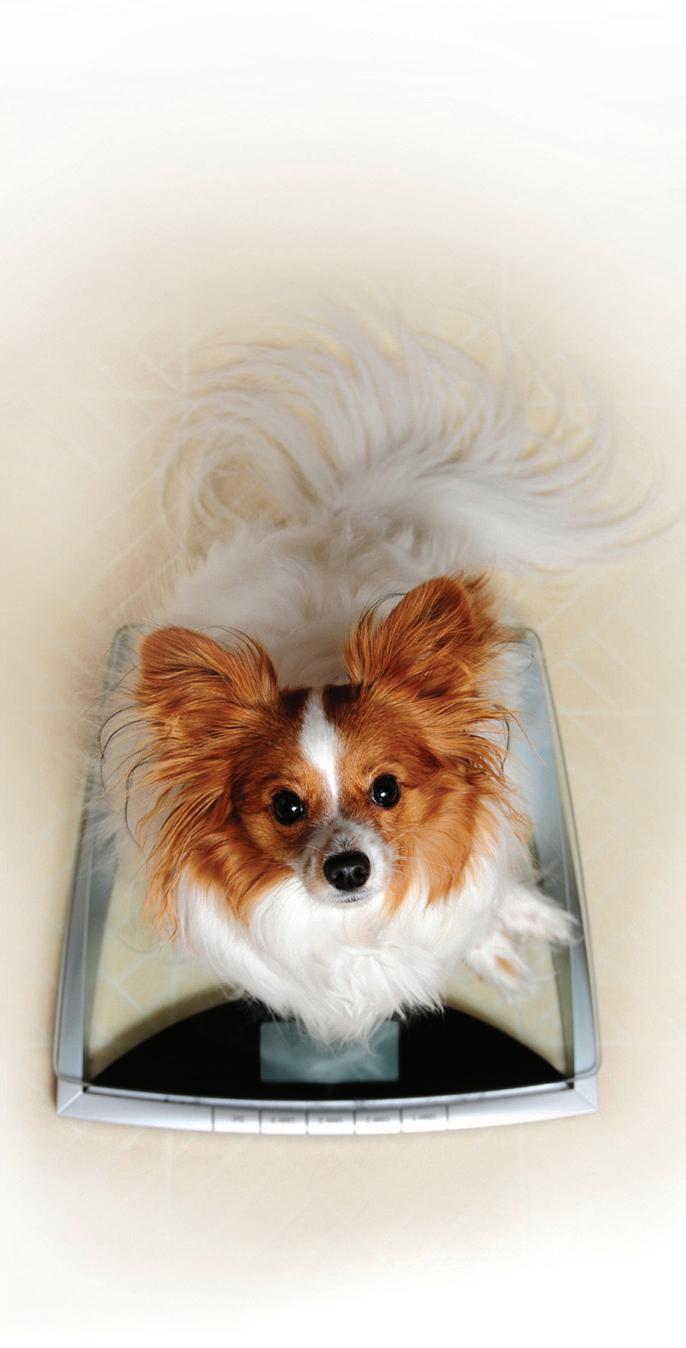
• We have the tax expertise you need when buying or selling
• We are Accredited in Business Valuations, a certification that only CPAs can hold
• We are an independent adviser with no financial stake in the transaction
We are experts in all aspects of:
• Buying and selling a veterinary practice or clinic
• Facilitating associate buy-ins
• Preparing an exit strategy
• Creating an estate plan
• Increasing the value of your practice
To maximize value and minimize taxes, contact:
Lou Gatto, CPA lou@gattomcferson.com
Tom McFerson, CPA, ABV tom@gattomcferson.com
The 2020 Pacific Veterinary Conference (PacVet) will be held in San Francisco from June 18 to 21. PacVet has a dedicated technician track as well as a Technician Fair with vendors and raffle drawings. CVMA members receive discounted rates for this very popular and informative conference.
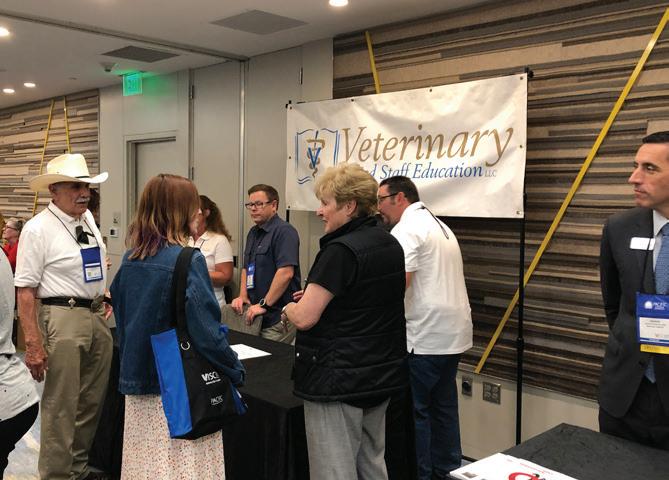
528 Arizona Ave. Suite 201 Santa Monica, CA 90401
Ph: 310-393-2434
Fax: 310-393-8777
www.gattomcferson.com
The CVMA’s exclusive insurance brokerage, Veterinary Insurance Services Company (VISC) offers specially designed personal and professional insurance program packages to members.
The CVMA legislative team, staff, and legislative advocates are constantly monitoring proposed legislation that affects you and your right to practice veterinary medicine in California. The CVMA Political Action Committee (CVMA-PAC) provides bipartisan support for our legislative team to establish relationships with key lawmakers so that your voice is heard at the capitol.
Stay up-to-date with current news about the veterinary profession with our websites cvma.net and cvma-inline.net, the California Veterinarian bi-monthly magazine, the CVMA Weekly electronic newsletter, CVMA at the Capitol legislative newsletter, CVMA action alerts, and the CVMA mobile app.

Join veterinary students from UC Davis School of Veterinary Medicine and WesternU College of Veterinary Medicine as they present their research at the Vet Expo during the Pacific Veterinary Conference. Students will be available to discuss their findings during lunch breaks on Friday, June 19 and Saturday, June 20, and the afternoon break on Friday from 2:50 PM to 3:30 PM
UC Davis Student Poster Presenters and Topics
• Cheyenne Chen, Class of 2022
The Role of TLR4 in Endotoxin-Induced NETosis in Equine Neutrophils
• Briana Hamamoto-Hardman, Class of 2022
Pharmacokinetics and the Physiologic Effects of Meperidine in Horses
• Monica Hodapp, Class of 2022
Evaluation of Filtered Micro Plastic Sample Preservation Methods for Raman Analysis
• Sanskruti Potnis, Class of 2022
Effect of Medicinal Plant Extracts on Induction of Antimicrobial Peptide Expression From Corneal Epithelial Cells
• Brad Whelchel, Class of 2021
The Role of Breed and Diet in Developing Taurine Deficiency and Nutritionally-Mediated Dilated Cardiomyopathy
WesternU Student Poster Presenters and Topics
• Kailynne Atkinson, Class of 2022
Comparing the Anesthetic Efficacy of Alf/Dex/But or Alf/Dex/Bup in Rabbits
• Sebastian Betancourt-Vasquez, Class of 2021
Morphology and Histology of the Esophagus and Stomach of the Argentine Tegu (Salvator merianae)
• R. Carina Cortez, Class of 2022
Anesthetic Efficacy of Alfaxalone-Dexmedetomidine with Midazolam or Butorphanol in Ferrets
• Tracy Nguyen, Class of 2022
Non-Invasive Electroretinography in Adult Zebrafishes (Danio rerio) Vertebrate
• Ana Ramirez, Class of 2023
Clinical Trial: Canine Adipose Mesenchymal Stem Cells for Treatment of Canine Atopic Dermatitis
Calling all UC Davis and WesternU alumni, join your classmates and current students at evening receptions on Saturday, June 20, from 5:30 PM to 7:00 PM. Catch up with old friends, make new ones, dine on hors d’oeuvres, and enjoy a no-host bar.
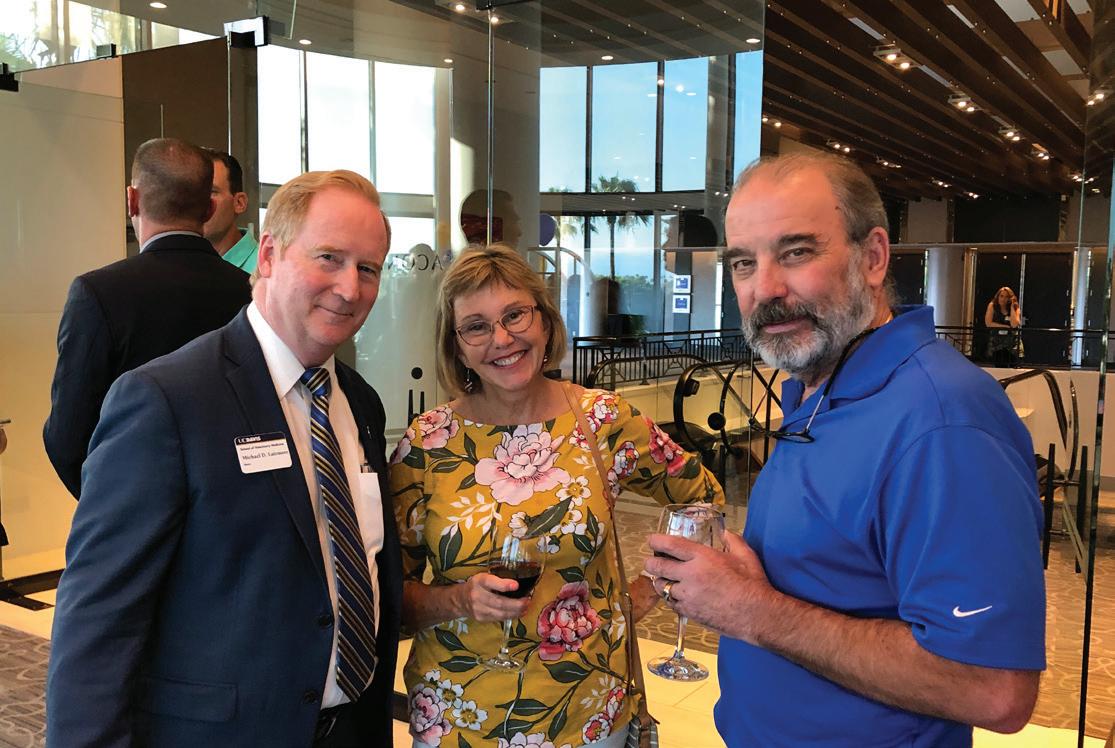
Western University of Health Sciences College of Veterinary Medicine (CVM) student Samantha Eisner (Class of 2022) is serving as secretary on the board of the National Student Veterinary Emergency and Critical Care Society (SVECCS).
Eisner said she wanted to serve on the national board of SVECCS to provide support and guidance to veterinary students in various SVECCS chapters and connect with students who share her professional interests. Additionally, she wants to give WesternU a national voice.
“Our veterinary program is so much different from other programs, so I wanted our school to be represented on a national level so that people know how awesome WesternU is,” Eisner said.
“Through participation in SVECCS, including travel to the International Veterinary Emergency and Critical Care Symposium and participating in board meetings, Samantha has the opportunity to network and familiarize herself with this organization prior to graduation,” said CVM Clinical Assistant Professor Gillian Angliss, DVM, a co-adviser to WesternU’s SVECCS. “She will understand how this organization serves its members and how her participation can directly impact the profession, especially in the field of emergency and critical care.”
Eisner became interested in emergency and critical care medicine initially through working as a veterinary assistant before attending CVM, where she was exposed to the varied and exciting cases and challenges that come with emergency medicine.
“This interest has been nurtured throughout vet school as I began to study emergency medicine more and became involved with SVECCS,” Eisner said. “My goal is to pursue a rotating small animal internship after vet school and then go into small animal practice.”
Eisner said contributing to local and national organizations provides students a way to give back and enrich the environment of veterinary school.

“It makes me so happy to know that I might have sparked another student’s interest in emergency medicine through a club event, or opened their eyes to a field which I love,” she said. “I’m so grateful to have this opportunity to be in vet school, and if I can help to better the vet school experience for all, then that’s a win in my book!”
She encouraged all students to get involved in clubs and organizations that interest them.
“We all need fun things to do and extra activities beyond reading the textbook,” Eisner said. “For me, doing things outside of class relating to emergency medicine helps to remind me of the end goal and keeps me excited for what the future may bring as a clinician.”
Eisner is the second WesternU CVM student to serve as a national SVECCS officer. Trusten Moore, Class of 2020, served as SVECCS president in 2018–19, and he encouraged Eisner to throw her hat in the ring.
“This demonstration of Sam’s community spirit and leadership qualities bears evidence of our studentcentered problem-based inquiry and grants her several unique opportunities: improving the visibility of WesternU CVM as well as that of our local chapter; sharing first-hand with chapter representatives the benefits of attending IVECCS; fostering collaborations between WesternU and other SVECCS chapters; and identifying speakers and other sources of insights into the latest developments in emergency medicine and critical care,” said CVM Assistant Professor Maisie Dawes, DVM, Ph.D., DACVIM, who serves as WesternU’s SVECCS co-adviser. “In addition to affording her and her constituents a voice in the future direction of NSVECCS, her professional development will undoubtedly be positively influenced by her interactions with leaders in the field.”
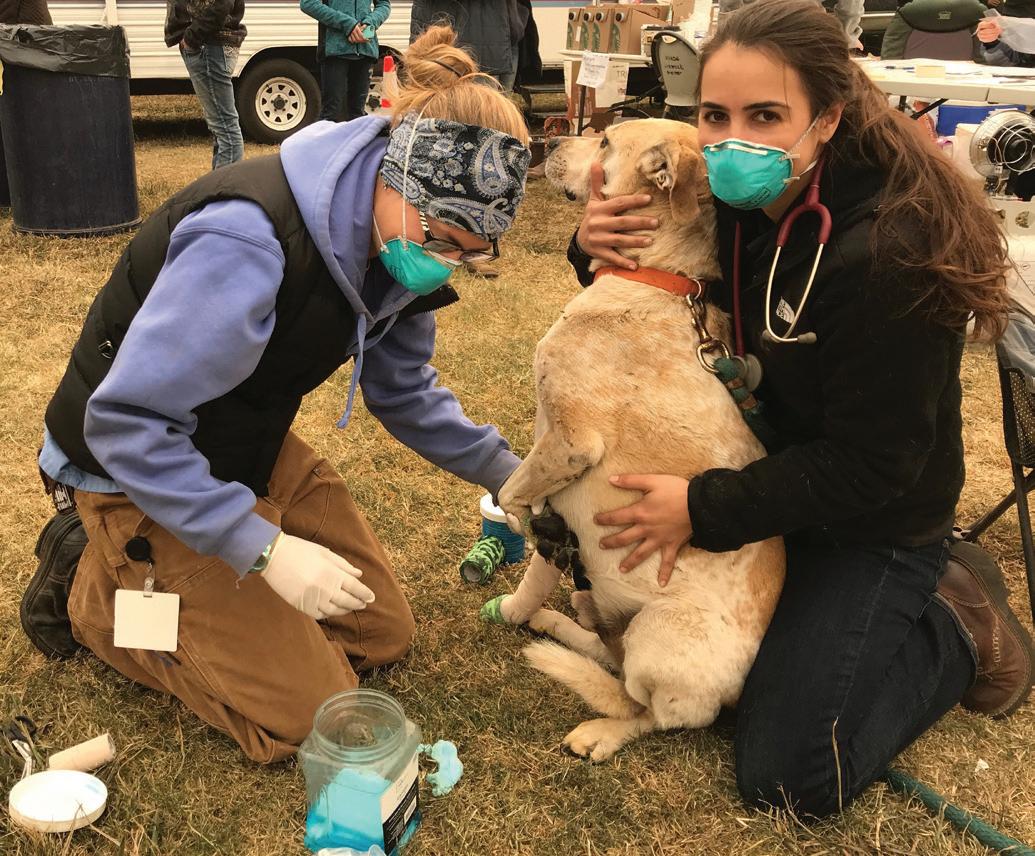

There are no easy fixes to the fires that have plagued California, and now Australia. But we do know the best framework for finding solutions.
When the U.S. Senate declared January “One Health Awareness Month,” they may not have had Australia’s wildfires on their minds. However, the situation, which parallels our fire issues in California and other areas of the West, provides an urgent example of the need for a more comprehensive One Health approach to solving our complex environmental and health problems.
One Health recognizes the interconnections between people, animals, and their shared environment, and uses collaborative approaches to achieve optimal health outcomes that benefit them all. Traditionally, our society has worked in silos to try to solve individual issues. With a One Health approach, shared goals and knowledge are central to addressing big picture problems.
The fires include all the elements of a One Healthaddressable issue, which is that human land-use management techniques and climate change have escalated the intensity of wildfires, and these fires are increasingly and dramatically altering the natural balance between us and the Earth’s ecosystem. They also create real human and animal suffering and health issues, and put safety workers in harm’s way.
At the UC Davis School of Veterinary Medicine, we have seen important results from One Health approaches that would not have been achieved otherwise. Our One Health Institute has been working with the United States Agency for International Development to understand what leads to human pandemics. Pandemic diseases like the recent coronavirus from China tend to be zoonotic in nature, so having veterinarians, public health workers, physicians, and scientists working collaboratively is crucial in addressing them.
The wildfires are perhaps our greatest challenge yet, but a One Health approach gives us a leg up. The human, animal, and environmental suffering and loss is devastating; the economic costs staggering. And though the idea of stopping them at the root may seem daunting, there are scientists, policymakers, medical and veterinary professionals, and others who have solutions to different aspects of the problem. A One Health approach can help bring them together to move us toward large-scale resolution.
It is time to adopt One Health approaches at scale. Please learn more and be an advocate, whether you are a veterinarian, policymaker, scientist, healthcare provider, or an interested citizen. Now is the best time to address our urgent concerns and help heal all of Earth’s creatures and the planet we share.
Veterinarian
Dr. Sarah Anger
Dr. Teresa Beiter
Dr. Kelly Beverly
Dr. Kimberley Bhuta
Dr. Rebecca Black
Dr. David Bone
Dr. Gerad Cantin
Dr. Timothy Cashin
Dr. Julian Castaneda
Dr. Betty Chow
Dr. Andrew Connors
Dr. Miguel Constantino
Dr. Uta deHaas
Dr. Krista Dicksey
Dr. Oren Drelich
Dr. Ardeshir Elahi Mollood Aval
Dr. Emily Farmer
Dr. Catherine Fick
Dr. Kelly Fishman
Dr. Alison Flynn
Dr. Cheslymar Garcia
Dr. Mandeep Ghumman
Dr. Catherine Gilabert
Dr. Jennifer Godfrey
Dr. Andrew Grange
Dr. Susan Greenbaum
Dr. Monica Hahn
Dr. Karen Hassan
Dr. Geethanjali Hegde
Dr. Angela Hofmann
Dr. Emily Hubbard
Dr. Denise Johnsen
Dr. Allison Joiner
Dr. Mary Kelly
Dr. Asaf Kerem
Dr. Elizabeth Kestler
Dr. Tejinder Khehra
Dr. Harvey Khella
Dr. Jihyun Kim
Dr. Sung Yeop Kim
Dr. Jessica Kirksey
Dr. Kris Kruse-Elliott
Dr. Kathleen Kuzminski
Dr. Wai Hin Lam
Dr. Tracy Landreth
Dr. Mark Lee
Dr. Zara Levy
Dr. Jessica Maynard
Dr. David McGrath
Dr. Toufeer Mehdi
Dr. Trevor Morimoto
Dr. Robert O’Neil
Dr. Trisha Oura
Dr. Amanda Page-Karleskint
Dr. Meagan Painter
Dr. Laura Quan
Dr. Aidin Rahbari-Kharazi
Dr. James Ransom
Dr. Carli Reece
Dr. Samantha Rose
Dr. Kathleen Rowe-Guthrie
Dr. Kristine Ruiz
Dr. Robert Runyan
Dr. Kathleen Sahyouni
Dr. Masoumeh Shahabeddin
Dr. Amit Sharma
Dr. Alexandra Silver
Dr. Lindsay Sjolin
Dr. Helen Smith
Dr. Cynthia Steele
Dr. Amanda Tallant
Dr. Rebecca Thongkham
Dr. Huyanh Tran
Dr. Kathleen Tsimbas
Dr. Michelle Turner
Dr. Berk Utsukarci
Dr. Barbara Weintraub
Dr. Julie Wetherell
Dr. James White
Dr. Nancy Whyte
Dr. Tracey Williams
Dr. Cara Wright
Dr. Cori Youngblood
Veterinarian 1st Year
Graduate
Dr. Erica Addante
Dr. Kaitlin Barber
Dr. Michelle Beermann
Dr. Alexander Bischo
Dr. Christine Chen
Dr. Minji Cho
Dr. Stephanie Dennis
Dr. Caitlin Diggs
Dr. Carolyn Dunn
Dr. Shanina Halbert
Dr. Mallory Mathews
Dr. Abigail Pagel
Dr. Nazbanoo Pahlavi
Dr. Julia Popish
Dr. Shelby Temple
Dr. Drew Wishnack
Dr. Elana Young
Veterinarian 2nd Year
Graduate
Dr. Jennifer Lin
Dr. Katelin McKeown
Dr. Thomas Michal
Dr. Kathleen Parker
Veterinarian 3rd Year
Graduate
Dr. Lance Day
Dr. Blaine Melody
Veterinarian 4th Year
Graduate
Dr. Landon Collins
Dr. Kye Kable
Dr. Natalie Palumbo
Dr. Erica Paxton
Dr. Carolina Vicario
Veterinarian Intern/ Resident/Post
Graduate
Dr. Kate Robertson
Veterinarian Public Service
Dr. Betty Fleeman
Veterinarian –
Out of State
Dr. Amrinder Singh Kansla
Registered Veterinary Technician
Heather Aguilar, RVT
Audrey Alvarez, RVT
Daniela Alvarez, RVT
Lisa Barber, RVT
Diane Bentz, RVT
Cara Braxton, RVT
Rachael Burnham, RVT
Sharon Burns, RVT
Emily Byrdsong-Bailey, RVT
Lucile Cailleau, RVT
Andrea Chagolla-Melendez, RVT
Jennifer Cheung, RVT
Rosa Cortese, RVT
Brandy Dyer, RVT
Sade Flores-Haro, RVT
Jomhalie Garcia, RVT
Kelli Gri th, RVT
Carolyn Guajardo, RVT
Marilyn Hagler, RVT
Maria Heredia, RVT
Chelsea Jacklin, RVT
Holly Johnston, RVT
Dylan Lane, RVT
Alexandra Lee, RVT
Susan Lee, RVT
Keriauna Long, RVT
Karin Marsicek, RVT
Andrea Mattern, RVT
Nahtali Medina, RVT
Rosa Mendoza, RVT
Kimberly Messer, RVT
Bari Nazario, RVT
Leigh Ann Nilsson, RVT
Karen Novoa, RVT
Raul Ojeda, RVT
Angela Ortiz, RVT
Lillian Page, RVT
Margaret Park, RVT
Danielle Quinn, RVT
Danielle Richard, RVT
Maren Rimmer, RVT
Amanda Rofe, RVT
Chrystal Salsberry, RVT
Leann Seroka, RVT
Ann Sisneros, RVT
Hannah Stone, RVT
Rebecca Taylor, RVT
Charlotte Tipton, RVT
Annette Waner, RVT
Breanna Wright, RVT
Camille Yong, RVT
CVMA Certified
Veterinary Assistant
Jazmin Amezquita-Ortiz, CVMA CVA
Natalia Dupree, CVMA CVA
Matty Hurst, CVMA CVA
Glen McClellan, CVMA CVA
Taylor Storm, CVMA CVA
Meagan Stubbs, CVMA CVA
Samantha Thomas, CVMA CVA
Jeannette White, CVMA CVA
Veterinary Hospital Staff
Dawn Schroeder
The CVMA extends our sincere sympathy to the friends and family of those remembered.
• Dr. Duane Hauser, a CVMA Life member, passed away on December 12, 2019. He received his DVM from Iowa State University in 1960 and practiced veterinary medicine in Arizona.
• Dr. Philip Plocher, a CVMA Life member, passed away on December 1, 2019. He received his DVM from UC Davis in 1954. He was the owner of Uptown Animal Hospital in Long Beach, CA for 30 years.
In memory of deceased members, the CVMA makes a donation to the California Veterinary Medical Foundation. Its mission statement reads: “Nurturing kindness, education, and well-being for all animals, people, and the environment.”
Ellie Wattles, DVM, President, Broker
Beka Herrera, Vice President, Broker Connie Burke, CPA, CVA, CM&AA
LOS ANGELES, COASTAL: MOTIVATED SELLER! Rare opportunity to own a well- established practice located in an excellent area on a corner lot along a major thoroughfare in a vibrant community. The city includes a state university, along with a harbor port, airport. ~1,100 sq.ft free-standing facility. Equipment includes Abaxis VS2 lab, dental unit, Digital DR X-Ray. 2019 net sales ~$556,000. O OWNER WILL CONSIDER PARTIAL SELLER
FINANCING AT ASKING PRICE PRACTICE PRICE: $400,000 REAL ESTATE PRICE: $575, 000
O R A N GE COUNTY, COASTAL- Priced to sell quickly: This charming community offers ideal weather, a diversified economy & excellent educational system. The city is located near three airports: (SNA), (LGB), & (LAX). PX is located in a newly renovated urban shopping center. Efficient leased facility ~ 1,200 sq. ft. w// 2 exam rooms, 3 runs & several cages. 2019 Gross ~$554K produced w/eextremely limited, part time DVM hours. Significant growth potential with new energetic owner-operator. Currently, the PX values at greater than 1 year’s gross. P PX PRICE ONLY: $470,900
SOLANO COUNTY, on the Sacramento River: This growing suburban community is located between the East Bay & Sacramento. ~ 3,900 sq. ft. leased facility offers 2 exam rooms, several cages & separate storage area. Well staffed PX with 3 RVTs. Equipment includes IDEXX lab station & CR- X-Ray. 2019 gross ~$816,000 produced with no weekend hours. Excellent profitability. Areas for growth. PRACTICE PRICE: $740, 000
CAMARILLO: Great Community! Price reduction, PX offered at less than a start-up Located in an upscale community w/ excellent amenities, desirable demographics & highly rated schools. Attractive & modern, ~1,800 sq. ft leased facility is strategically located in popular shopping center. Under utilized practice with limited DVM hours. 2018 Gross ~$407,000. M Motivated Seller. NEW REDUCED PRACTICE PRICE: $225, 000.
V VENTURA COUNTY: A thriving community located just nine miles from the Pacific Ocean. This city offers an appealing mixture of rural & suburban lifestyles. Excellent demographics, award winning schools & desirable amenities. Efficient, leasehold facility consists of ~1,200 sq. ft & 2 exam rooms. Full-service PX is moderately equipped w/ Digital X-Ray and Antech lab. 2018 Gross ~$804,000. P PRACTICE PRICE ONLY: $555, 000
GREATER SAN DIEGO: Wonderful community known for its high quality suburban lifestyle. Easy access to retail, commercial areas, beach cities & outdoor activities. Outstanding school district. Leased facility ~ 2,000 sq. ft. w/ 3 exam rooms, digital X-RAY, digital dental X-RAY & complete inhouse lab. 2019 Gross ~$607,000 produced with limited DVM hours. MOTIVATED SELLER PRACTICE PRICE ONLY: $350,000
MENDOCINO COUNTY: Just 2 hours north of the San Francisco Bay Area & west of Sacramento. This area boasts spectacular scenery & distinctive wineries. Hundreds of miles of hiking trails, verdant hills & secluded lakes residents can easily find solitude & beauty. 1 PT DVM PX. ~1,500 sqft leasehold facility located in a small strip-center. 2019 Gross~ $396,000 produced with very limited hours. P PX PRICE ONLY: $120, 000.
O R A N G E C O UNTY, NORTH: The city is located within easy driving distance of beaches, theme parks & mountains and all of SoCal s attractions. Wellestablished PX located along a major thoroughfare and surrounded by housing communities. Roomy leasehold facility ~ 3,200 sq. ft. w/ 3 exam rooms, 35+ cages & 10+ runs. 2019 Projected Gross ~$700K produced w/ limited DVM hours. Growth potential. N NEW LISTING! PX PRICE: $550, 000
WEST LOS ANGELES: ~2,100 sq. ft. leased facility, newly remodeled. Well-equipped PX includes IDEXX lab, digital X-Ray & digital dental X-Ray. Exceptionally profitable, large grossing PX . 2018 Gross ~$1.9 Million P PRACTICE PRICE: $1 9 Million
SAN BERNARDINO COUNTY, NORTH Spectacular, like new, lease-hold hospital includes approximate 4,400 sq. ft with 5 exam rooms and 20+ cages. 2018 gross ~$1,480,000 produced w/ limited DVM hours. CALL FOR PRACTICE PRICE
LANCASTER: Frees- standing, newly constructed, attractive hospital includes over 5,100 sq. ft with 6 exam rooms. Well-equipped, computerized, full-service small animal practice with outstanding, seasoned staff. 2018 Gross ~$2 Million in 2018. PX PRICE: $1, 550, 000 REAL ESTATE PRICE: $1 1 Million
545 Sespe Avenue
Fillmore, CA 93015
Phone: 805.524.3195 Fax: 805.524.3192
E-mail: PacProInc@aol.com Website: www.pacificproinc.com
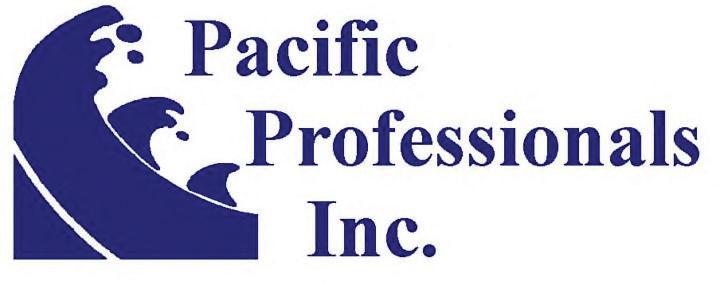
Place your ad in the Career Center at cvma.net. There are two options for classified advertising:
1. Online advertising
2. Online and in one issue of the California Veterinarian
CVMA Members NonMembers
*Price includes the first six lines of text. Each additional line is $10/$11 for non-members. A line consists of approximately 50 characters.
**If you wish to place a print ad only, contact Laura Phillips at 916.649.0599 or classifieds@cvma.net.
Online only
30 days online $149 $199
60 days online $249 $299
90 days online $349 $399
Online and in one issue of the California Veterinarian
60 days online + one issue of the California Veterinarian $299 $349
90 days online + one issue of the California Veterinarian $399 $449
POST AN ANONYMOUS AD OR RESUME
Resume – Post a confidential resume. Go to cvma.net. Click on the Resources tab then Classifieds in the right menu to get started.
Ad – Place a confidential ad by creating an anonymous email address and using it when posting your ad.
Veterinarians
If you have any questions, please contact customer service at 860.437.5700, clientserv@yourmembership.com, or classifieds@cvma.net.
DEADLINE DATES FOR AD SUBMISSIONS IN THE CALIFORNIA VETERINARIAN:
Issue
Deadline
Jan/Feb December 5
March/April
February 5
May/June April 5
July/Aug June 5
Sept/Oct August 5
Nov/Dec October 5
If your ad is received after the deadline, it will go into the following month’s California Veterinarian. After the deadline, the CVMA cannot alter or cancel ads. The CVMA reserves the right to edit copy and does not assume liability for contents of classified advertising. Prices subject to change without notice.
San Francisco Peninsula. We are currently seeking a licensed veterinarian with at least two years of experience to join our practice. Our opening is for a full-time veterinarian but we will also consider the candidate whose desire it is to work four days per week. We are a busy two-veterinarian small animal practice that is looking for a team player that enjoys working up cases and some surgery. The ideal candidate will have strong medical, surgical and excellent communication skills that enjoys working with clients. We are paperless, have digital radiography, fully equipped surgery, IDEXX blood testing equipment, surgical laser unit and digital dental radiography. We work with traveling specialists in surgery and radiology. We offer continuing education, a group health plan and opportunities for advancement. The San Francisco Peninsula is central to arts, culture and outdoor activities. Email rcowing650@me.com.
Valley Animal Hospital of Merced is an excellent place to be a veterinarian. There are many reasons that we are the highest rated clinic in Merced County. We have 4 DVMs who work together and a great team of motivated employees. The Doctors at VAH have been members of this community from 15 - 30+ years. We value Client Communication AND Quality Medicine. We also recognize that ‘every client has a different budget’, so we like to offer treatment options to help people and their pets. We have digital x-ray & digital dental, electrocautery, ultrasound, Cardell monitors, in house CBC/Chem (IDEXX equipment), and a lot more. We perform a lot of surgery, soft tissue and orthopedics (ACL, luxating patellas & fracture repair.) VAH is very involved in the Rescue community and provides Low Cost Spay/Neuter through
a program administered by a local non-profit group. Merced, California is a growing community and one of the ‘most affordable’ places to live in California. With UC Merced nearby, the community (and our clientele) are going to continue to grow over the decades. We offer a base salary + productionbased compensation package with excellent benefits that includes health and dental insurance, continuing education, 401k matching retirement plan, association dues, vacation and more. We will give you the opportunity to make $100K or more — the rest is up to you! Email drklingborg@me.com.
We operate busy and successful outdoor pet vaccination clinics, which serve 6 counties. We would like to meet a Ca Licensed Veterinarian interested in helping on a relief basis or working with the intent of assuming the business in the future. Contact Geoffrey Antipa, DVM or Toni Antipa 916.425.5991 or email office@dogandcatshots.com.
Northpointe Veterinary Hospital in Yuba City, CA is looking for an experienced emergency veterinarian to join our growing 24/7 hospital. Join our team of over 50 staff members dedicated to compassionate patient care. The hospital is located approximately 45 minutes north of Sacramento or UC Davis, in the north central valley of California. Work in a new award winning, modern well-equipped hospital with great support staff who are able to provide excellent technical support for your cases 24 hours a day. Our AAHA accredited practice is equipped with a complete Idexx in-house lab, I-Stat unit, digital radiography and digital dental radiography, surgical laser, colorflow doppler ultrasound, Snyder oxygen cage, and all of the other medical equipment you are likely to want to practice quality medicine. We offer a competitive compensation and benefits package, which includes medical, dental, and life insurance, EAP, vision plan, 401K plan with match, CE allowance, licensure and dues, flexible scheduling, one month paid time off and more! Guaranteed base salary $156,000-$200,000 depending on schedule you choose, plus additional production compensation. Visit our web site at: npvethospital.com. Email resume and cover letter to: ssandersdvm@gmail.com or fax to: 925.938.1639.
Benicia Cat Clinic is looking for a part time associate. We are looking for someone that loves working with cats, an established staff and excellent clients. We have in house labs, digital radiographs including dental, ultrasound machine and many close by specialty clinics. The ideal candidate would be
comfortable covering shifts by themselves so the main doctor can have 1-2 days off on a regular basis. Not a must but if they are also interested in covering vacations this is available as well. Salary based on experience. Benefits potentially available to the right candidate (IRA, partial health insurance coverage). Please e-mail resume to drraubcc@gmail.com.
With over 40 years of established clientele and a staff with excellent longevity, Brentwood Veterinary Hospital offers progressive medicine focused on client and patient care. Brentwood is a growing city but still has a great small town feel. Located in the East Bay area close to Silicon Valley, the Wine Country, the Pacific Coast and the Sierras. We are open 8am6pm Monday through Friday and 8am-1pm Saturdays so we offer a great work/life balance. Looking for a veterinarian who is willing to commit to 3-4 days per week. We are focused on finding a passionate, small animal clinician for a well-known practice. Preference will be given to someone with experience however; we will certainly consider a new graduate as well. We are an AAHA hospital with a well established staff and a great doctor to staff ratio. We offer strong mentorship, a collaborative working environment, and a generous compensation package. Come join our team as we provide high quality, progressive medicine that has helped us build an excellent reputation in our community. Email bvh1@pacbell.net.
We are located in Yuba City, CA and we are seeking an experienced Surgeon to join our Spay Neuter & Vaccination Specialty Practice which is limited to healthy canine and feline pets. We are not a treating hospital. We offer a competitive salary with a 4-day and 4 to 5-hour morning schedule. Our clinic is closed on Sundays and major holidays. The ideal Professional will have a California Veterinary license and substantial spay/neuter experience. She or he will be supported by an experienced and highly skilled staff. This is a position of employment which requires CVMB, DEA and Premises licensure. Please email your cover letter and/or CV to the Executive Director. Rubiox@sbcglobal.net.
Davies Animal Medical Hospital - Located in Yuba City, CA is an easy commute from Sacramento or Chico. Yuba City was recently voted Top Ten Best Small Cities in the US and we are seeking a motivated, experienced full-time veterinarian to join a well-established (over 25 years), progressive small animal practice with a loyal fan base. Davies Animal Medical Hospital
is a privately owned, 4-doctor practice that is growing quickly. We have a highly skilled, fun and collaborative staff with a high Staff to Doctor ratio. Ideal candidate would be a team player, supportive mentor, thrive in a fast-paced environment, competent in basic surgery/dentistry, provide high quality medicine for our patients and focused on creating a warm, family experience with clients. The hospital is a paperless and well equipped with stateof-the-art ultrasound (AUS and Echo), in-house IDEXX laboratory, both dental and conventional digital radiology and laser therapy. We aim to provide our team with a balanced work/home life. No on-call or after hour emergencies. Flexible work schedule of 4-5 days per week rotating schedule (if desired) with 2 weekend days a month. Salary of $125-145k plus production bonus and competitive benefits (Health/Dental/Vision/Simple IRA/CE allowance/Dues/Licenses). Signing/relocation bonus negotiable. Email Manager@daviesanimalhospital.com.
equipment, and a new ultrasound unit. We have an energetic, friendly and well-trained support staff including several very experienced RVTs. We also work closely with a local non-profit organization, Animals In Need Fund, which helps underserved pet owners care for their pets. Our small town of Nipomo, located on the Central Coast of California, recently topped the list as the best climate in the nation! We are conveniently located near San Luis Obispo, Pismo and Avila Beaches, Morro Bay and Santa Ynez, with Santa Barbara and Cambria just short drives away. We offer a complete benefits package with health and disability insurance, 401k, generous CE, and relocation assistance. For more information, or a confidential career discussion, please email your resume to Dr. Maggie Wagner. Email mgmnt@ nipomodogandcat.com.
Four Paws Veterinary Center is looking to add a full-time associate veterinarian to our busy three-doctor practice. We are a familyrun and family-oriented full service companion animal center located in Dublin, California. We are committed to providing all beloved pets: dogs, cats, pocket pets, reptiles and fish; the highest quality, up-to-date veterinary care. Our location is ideal for the candidate who desires to see a wide variety of medical, dental and surgical cases. We operate Monday – Saturday, day shifts. We offer a competitive base salary, medical and dental insurance, 401K, uniform allowance and continuing education allowance. Email fourpawsjen@gmail.com.
Nipomo Dog and Cat Hospital is seeking a motivated, enthusiastic, compassionate individual to join our collaborative team of veterinarians. Our small animal clinic is committed to practicing the highest standards of patient care in general medicine, dentistry and surgery. Our modern, light-filled hospital includes digital radiographs, digital dental radiographs, in-house laboratory
Dynamic small animal veterinary practice in Murrieta CA is in need of veterinarians who are interested in Internal medicine, Theriogenology and Surgery. New graduates are welcome and competitive compensation and benefits including base salary, PROSAL, CE and fees budget and vacation packages that are top of the line awaits successful candidates. Email bvillareal@verizon.net.
VetRelief.com welcomes DOCTORS and HOSPITALS to teamup and conveniently match your employment expectations. HOSPITALS: create an account, then post your jobs which include job’s dates, shifts, and your project’s description. Relief veterinarians will bid on your jobs. DOCTORS and HOSPITALS: together, you may negotiate conveniently and securely via VetRelief’s web site to ensure a good match. There is no commitment until Doctor and Hospital agree. Learn more at https://vetrelief.com, smarthire@vetrelief.com, call or text 949.899. (VETS) 8387.































Your profession is unique. Your
should be, too.